

Soul and R&B Mourn Loss of Roberta Flack, Gwen McCrae, and Jerry Butler
By Stacy M. Brown
NNPA
Newswire Senior National Correspondent
Roberta Flack, the Grammy-winning singer and pianist whose smooth vocals and intimate style made her a defining artist of the 1970s, died Monday at her home surrounded by family. She was 88. Her publicist, Elaine Schock, confirmed the news in a statement. Flack revealed in 2022 that she had been diagnosed with amyotrophic lateral sclerosis (ALS), also known as Lou Gehrig’s disease, which had taken away her ability to sing.
Her death came just one day after the passing of soul-funk singer Gwen McCrae, who died Sunday at 81. McCrae, best known for hits like “Rockin’ Chair” and “Funky Sensation,” was celebrated for her enduring influence on soul and disco music. It also came just days after three-time Grammy nominee and Rock and Roll Hall of Famer Jerry Butler, a premier soul singer of the 1960s, died at 85. Butler, known as “Ice Man,” had numerous hits including “For Your Precious Love,” and “Make It Easy on Yourself.” Butler’s niece, Yolanda Goff, told The Associated Press that Butler died of Parkinson’s disease at his home in Chicago.Roberta Flack: A Life in Music
Born Roberta Cleopatra Flack on February 10, 1937, in Black Mountain, North Carolina, she was raised in Arlington, Virginia, where her musical roots were cultivated at the Lomax African Methodist Episcopal Zion Church. Flack began piano lessons at nine and earned a full scholarship to Howard University at 15. She initially studied piano before switching to voice. She graduated at 19 and later taught music and English in North Carolina after her father’s death.
In Washington, D.C., Flack balanced teaching with
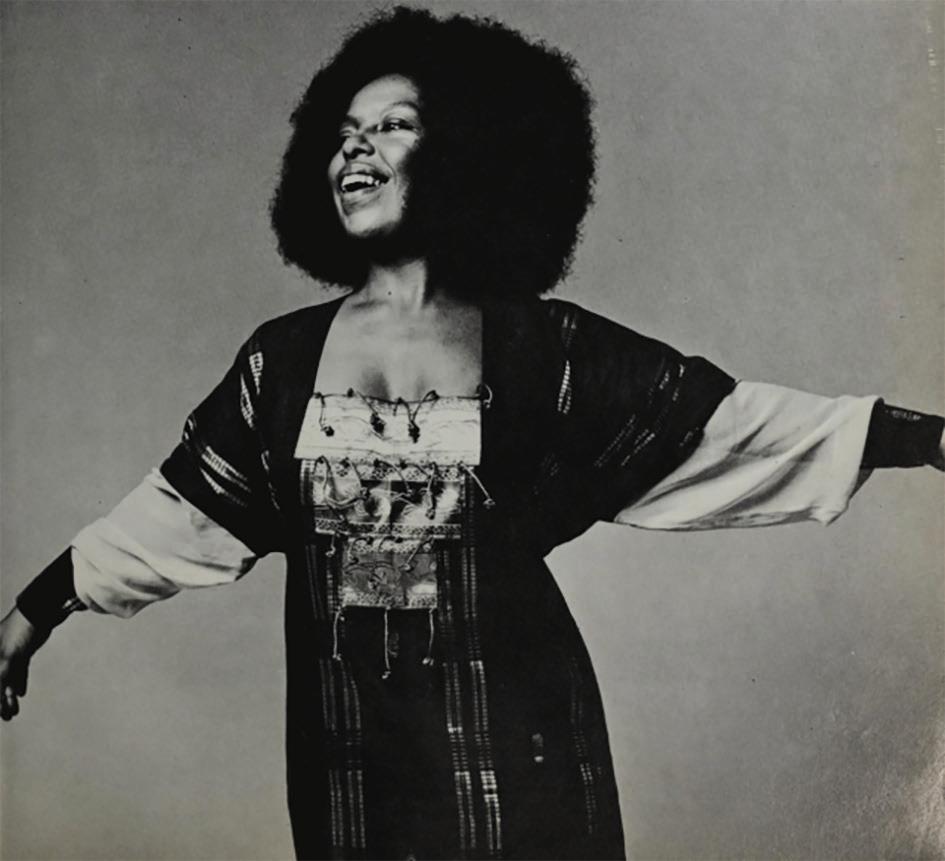
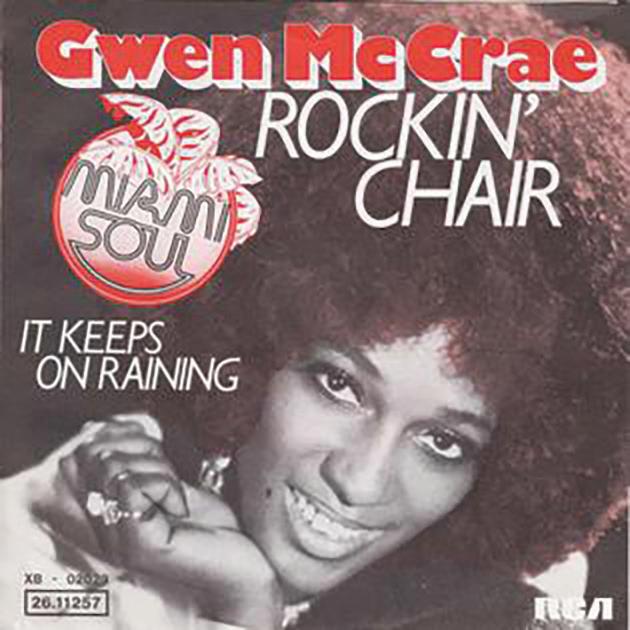
nightclub performances, captivating audiences at local venues like Mr. Henry’s on Capitol Hill. Her breakthrough came when jazz pianist Les McCann discovered her and arranged an audition with Atlantic Records. Her 1969 debut album First Take initially received little attention until Clint Eastwood featured her rendition of “The First Time Ever I Saw Your Face” in his 1971 film Play Misty for Me. Released as a single in 1972, the song topped the Billboard Hot 100 for six weeks and earned Flack her first Grammy Award for Record of the Year.
Flack’s success soared with her 1973 recording of “Killing Me Softly with His Song,” which became her signature hit. The song spent five weeks at No. 1 on the Billboard Hot 100 and earned her two Grammys: Record of the Year and Best Female Pop Vocal Performance. With the win, Flack became the first artist to earn consecutive Record of the Year awards. Her partnership with Donny Hathaway produced hits like “Where Is the Love,” which won a Grammy for Best Pop Performance by a Duo or Group. She continued her chart success with “Feel Like Makin’ Love” in 1974, making her the first female vocalist to top the Hot 100 in three consecutive years. Flack’s later collaborations with Peabo Bryson and Maxi Priest yielded popular tracks like “Tonight I Celebrate My Love” and “Set the Night to Music.” Throughout her career, Flack advocated for artist rights and founded the Roberta Flack School of Music, providing free music education to underprivileged youth. She received a star on the Hollywood Walk of Fame in 1999 and performed for Nelson Mandela that same year.

Flack is survived by her son, musician Bernard Wright. Gwen McCrae: Soul and Disco Legacy Gwen McCrae, celebrated for her rich voice and lasting impact on the disco and soul music scenes, died Sunday at 81. A statement from her official brand account called her passing “more bad news” for the music world and acknowledged how fans “are still jamming to ‘Rockin’ Chair’ all these years later.”
Born Gwen Mosley in Pensacola, Florida, McCrae began singing in church choirs before meeting George McCrae, whom she married in 1963. The couple performed as a duo and signed with Henry Stone’s Alston label. By 1970, McCrae had achieved early success with “Lead Me On.” In 1972, she released “Always On My Mind,” a song later popularized by artists including Elvis Presley, Willie Nelson, and the Pet Shop Boys.
Her biggest commercial success came in 1975 with “Rockin’ Chair,” which topped the R&B chart and reached No. 9 on the Billboard Hot 100. While the single remains her most widely recognized hit, many fans and DJs remember her for the 1981 club favorite “Funky Sensation,” which has endured as a dancefloor staple.
McCrae’s career spanned decades, and her other notable songs included “Keep the Fire Burning.” Despite her accomplishments, she often spoke about the lack of recognition and fair compensation for Black artists of her era. After suffering a stroke in 2012 that left her partially paralyzed, McCrae retired from performing. Her daughter, Leah McCrae, carries on the family’s musical legacy as a solo artist and member of the group Daughters of Soul.
The Legacy and Struggle of Black Firefighters in SoCal
By Edward
Henderson
California Black Media
The legacy of Black firefighters in California is built on stories of bravery and perseverance in the face of social and legalized discrimination.
As Black History Month comes to a close, California Black Media (CBM) honors the courage and service of Black firefighters in the state who were pioneers and torchbearers for future generations.
Sam Haskins became California’s first documented Black firefighter in 1892. Born a slave in Virginia, he migrated to Los Angeles around 1880, seeking a better life for his family. Haskins worked as a “Call Fireman,” filling in for sick or injured firefighters. Well-liked throughout the city, Haskins tragically lost his life in an accident in route to a distress call. To honor his service, Councilman James Ashman directed the Fire Commission to organize an engine company of all Black men. This paved the way for Lieutenant George W. Bright to become the first Black member of the Los Angeles Fire Department (LAFD) in 1897. Arnett Hartsfield also played a key role in the history of Black firefighters in California. After serving in the army, he joined the LAFD in the 1940s while earning degrees from both USC and UCLA. Despite his qualifications, Hartsfield was denied promotions and forced to work in segregated firehouses. At the time, Black firefighters could only be promoted within the city’s two African American fire companies, with opportunities opening only when someone left a position. To challenge these injustices, Hartsfield and 30 others formed the Stentorians, a fraternal organization for Black firefighters, to fight for desegregation. With the legal precedent set by Brown v. Board of Education, they successfully integrated the department. Hartsfield
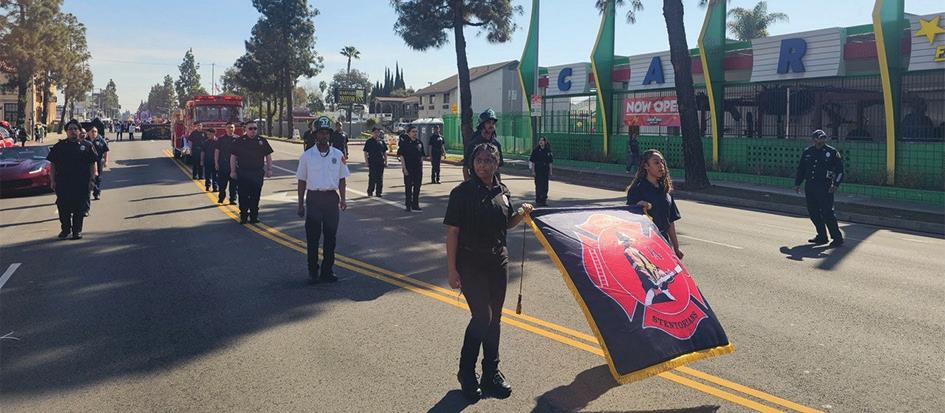
ics. Marching in the 2025 Kingdom Day
One-Armed Basketball Player Makes Women’s Division III History with Basket
fact she was born with one arm, end her dream of playing the game that her childhood idol LeBron James made her fall in love with 15 years ago.
That determination led the 22-year-old guard at Lesley University in Cambridge, Massachusetts, to become the first NCAA Division III women’s basketball player with one arm to score in a collegiate game, said her coach, Martin Rather.
“I kind of just shot the ball with the anticipation that I would have to go and get it back on a rebound,” Sinaman-Daniel said of the historic basket that she made from near the three-point line, which snapped the net without hitting the rim. “When the shot actually went in, I was more so surprised.”
Rather immediately called a timeout to mark the moment.
“My first thought was, ‘That’s history and we need to take a second to pause and celebrate it,’” Rather said. “Everybody just swarmed Baileigh, giving her high fives, celebrating her.”
The Stafford, Virginia, native’s path to history was sparked by a painful rejection at Mountain View High School.
“I had played for my high school for about three years and my senior year of high school when I tried out again, as I always did, I actually got cut and the coach basically told me that I wasn’t needed on the team,” she said.
That led to two days of misery and crying, until she made a bold decision while sitting in her car.
“I thought to myself, I could do this in college. What’s stopping me from doing this in college?” Sinaman-Daniel said. “So, I started emailing hundreds of coaches and it didn’t really matter what division it was. I was just trying to get a possible maybe or even better — a yes.”
That persistence caught Rather’s attention when Sinaman-Daniel, a 5-foot-6-inch guard, entered the transfer portal after two years at Warren Wilson College in North Carolina. At Lesley, Sinaman-Daniel has become known for her work ethic with the Lynx.
She has completed more individual practice sessions than any other player on the team, which is having its best season in 14 years and has reached the playoffs, Rather said.
“I think any team in this country would benefit from having a player with Baileigh’s heart on their team,” Rather said.
The achievement is particularly notable given the scarcity of one-armed players in collegiate basketball who could have served as role models.
“It is not very common to see somebody with one arm playing basketball. I think there’s probably about two or three of us in the collegiate level,” Sinaman- Daniel said.
Though there are few other notable one-armed college basketball players, the most successful is likely Hansel Emmanuel at Austin Peay, whose coach describes as “the biggest inspiration in college sports.” The athletic success of the 6-foot-6 men’s Division I junior, whose arm was amputated at age 6 after an accident, has proved limitations don’t define potential.
Since Sinaman-Daniel could not always use standard balance and ball management techniques used by two-armed players, her on-court success has required unique training methods allowing her to develop fundamental skills.
“Taking passes or giving a good pass or figuring out the right shooting form — I’ve had to tweak and adjust,” she said.
Sinaman-Daniel scored her second basket on her birthday, some seven weeks after her initial score, adding another layer of satisfaction to her breakthrough season.
The junior guard who was born with a tiny right arm that she is unable to use is studying psychology at the university just outside Boston and hopes her achievement will inspire others facing similar challenges.
“When people look at me, I just hope they see me as Baileigh. I hope they see me as a basketball player and also see me as somebody who’s willing and able to do everything that everybody else is doing,” she said.
Rather sees her impact extending beyond the court.
“We’re showing that we can both win and have really high quality players that might not look like everybody else on our team,” he said.
Wikimedia Commons
Wikimedia Commons
Courtesy photo LA County Stentorians: These students from the Dorsey High Fire Magnet Program, ranging from 9th to 12th grade, are in training to become firefighters and/or paramed-
Parade.
Trump Hosts Black History Month Reception
By April Ryan
“One of the reasons why I am president today is because of the Black vote,” Trump told African Americans celebrating Black History Month at the White House. There was a resounding response of “We love you” and “Thank you” from the exuberant crowd.
In November 2024, presidential candidate Donald John Trump won 20 percent of the Black vote. He won 13 percent of the vote in 2020 and 8 percent in 2016. Flanked alongside the president was iconic pro golfer Tiger Woods whose late father was a Black man. Senator Tim Scott, the longest-serving Black US Senator in History was also in attendance. The 47th president also recognized that ”we now have more Black Republicans serving in the US House than any time in history.” Shermichael Singleton, a Republican strategist and TV host, attended the standing-room-only event and said, “I am glad President Trump acknowledged the incredible contribution of Black Americans, regardless of people’s differences with him. It is important that every president recognizes the contributions of Black Americans since the inception of this country.”
He commented about the nation’s 250th anniversary where he said I “look forward to honoring the contributions of countless black Americans who fought to win, protect and expand American freedom from the very beginning.”
However, the president took a swipe at the 1619 project saying, “The last administration tried to reduce all of African American History to a single year, 1619.” Another round of boos were heard when he made the mention. Trump followed with “Under our administration, we honor the indispensable role Black Americans have always played in the immortal cause of another date, 1776.”
In support of the Black History Month event, Trump also announced plans for statue gardens in multiple states “of all of our heroes” of people like Jackie Robinson, Frederick Douglass, Aretha Franklin, and Coretta Scott King, Muhammad Ali, Kobe Bryant, and Harriet Tubman.
Throughout the presidential speech, several guests were spotted standing on White House chairs they used for a lunch of lamb chops and shrimp and grits. At one point a White House official was seen walking through the crowd
Trump saluted the valiant efforts of a slave named Prince Estabrook who fought alongside minutemen in the Revolutionary War. Estabrook is reported to be the first Black soldier injured in the American Revolution. Upon Estabrooks’ return to Massachusetts after the war, he was a free man.
telling people to get off the chairs. This reporter has never seen in 28 years anyone standing on the chairs in the East Room of the White House.
The event had a few sour notes. The head of the pharmaceutical company, Pfizer received an overwhelming round of boos.
A woman with her husband and her baby son explained the boos were because “the crowd didn’t like vaccines, mostly the COVID vaccines.”
Before the president entered the room with Woods, spotted in the crowd was a life-size cutout of Black Georgia, Pastor Jamal Bryant bobbing up and down in the crowd occasionally before the president entered the room. Black Press USA spoke with Dr. Bryant. The New Birth Missionary Baptist Church pastor questioned “How do you get something like that in the White House?”
The sign was a life-size replica of his head on a stick that at points was bouncing in the air at the event. The hand sign is believed to be an effort to target and intimidate the Georgia Pastor for his sharp criticism of the Trump administration and his boycott of stores that are dropping DEI.
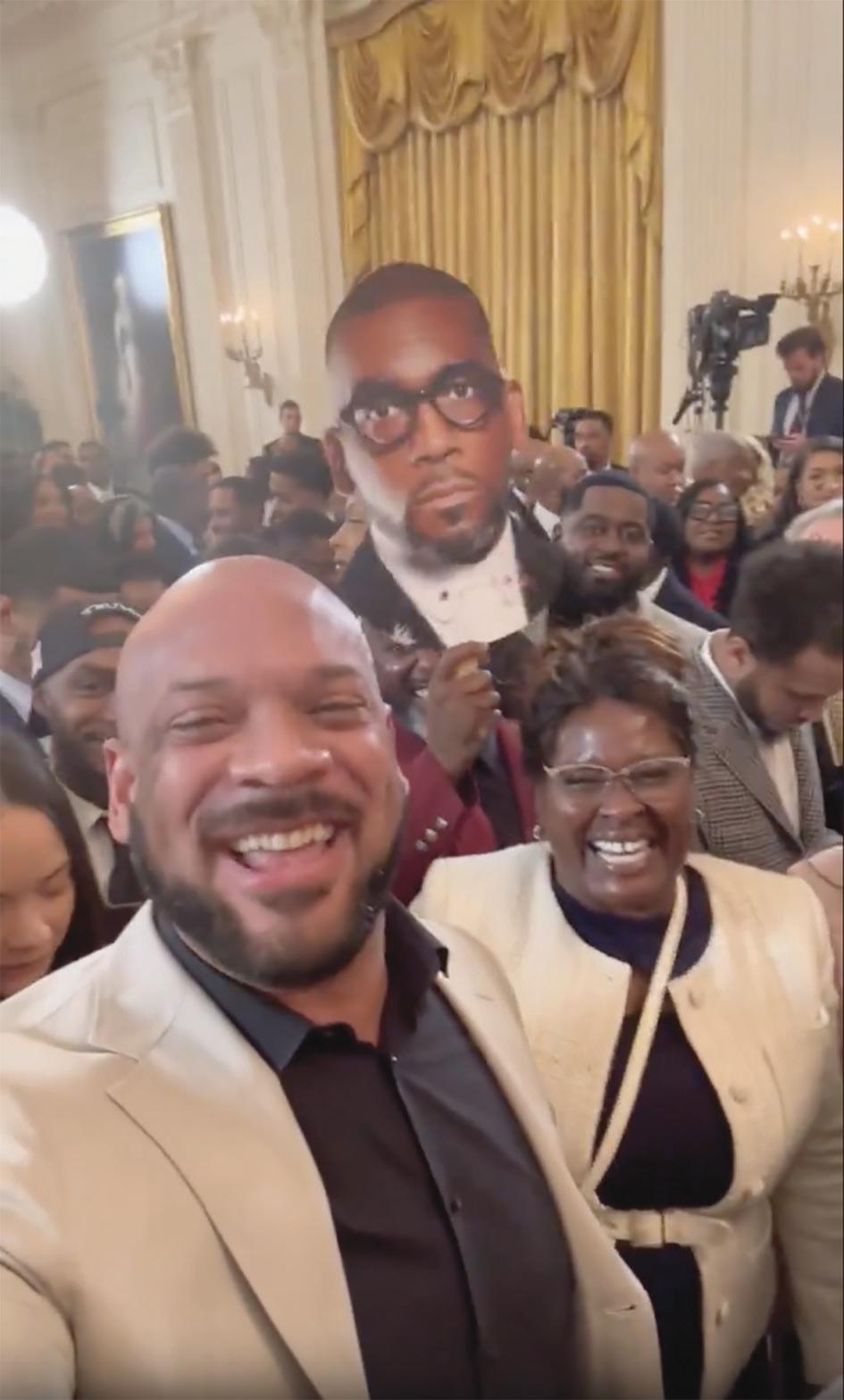
Federal Workers Face Unprecedented Ultimatum as Elon Musk Wields Trump’s Government Efficiency Agenda
By Stacy M. Brown NNPA Newswire Senior National Correspondent
Federal employees have been instructed to justify their work over the past week or risk being deemed as having resigned, according to a directive issued by the White House’s Office of Personnel Management (OPM). The mandate, which demands responses by 11:59 p.m. ET Monday, was reinforced by Elon Musk, head of the Trump administration’s Department of Government Efficiency (DOGE), who stated on X that noncompliance would result in termination.
The move has triggered widespread alarm and resistance within federal agencies. Major unions representing government workers, including the American Federation of Government Employees (AFGE) and the National Treasury Employees Union (NTEU), have advised members to proceed with caution or outright refuse to respond. “AFGE will challenge any unlawful terminations of our members and federal employees across the country,” union president Everett Kelley said in a statement. OPM’s directive followed Trump’s post on Truth Social urging Musk to intensify his efforts to streamline the federal workforce. While the official OPM email did not include Musk’s explicit threat, agencies and unions have reacted with sharp opposition. Kelley formally demanded that OPM Acting Director Charles Ezell rescind the
BakersfieldNews Observer
Adjudicated a Newspaper of General Circulation August 11, 1980, Kern County Superior Court Decree, Case No. 16964, Government Code 6023.
Bulk Mailing Permit 724 Bakersfield, CA 93385
Published By Observer Group Newspapers of Southern California, Inc. Corporate Office 1219 20th St. Bakersfield, CA 93301 (661) 324-9466.
Member of The National Newspapers Publishers Association, Associated Press, and The Better Business Bureau
President: Ellen Coley
CEO: Jon Coley
Publisher/ Editor: James Luckey Jr. Operations Manager: James Luckey Intern: William Clark Coley
Credo-The Black Press believes that America can best lead the world away from racial and national antagonisms when it accounts to every person, regardless of race, color, or creed full human and legal rights. Hating no person, fearing no person, the Black Press strives to help every person in the firm belief that all are hurt as long as any one is held back. The Observer Group Newspapers reserves the right to publish views an opinions that may not necessarily reflect those of the staff and management and are solely the product of the responsible individuals who submit commentaries published in these newspapers. Letters, articles and comments appearing in the Observer Newspapers reflect the opinions of the contributor and do not constitute the opinion or endorsement by The Observer Newspapers or its staff. The Observer Group Newspapers assumes no responsibility for photographs, articles, letters, press releases and unsolicited materials. Decisions as to the editing and publishing of materials are at the discretion of the Publisher and Editors. All rights are reserved on materials accepted for publication unless otherwise specified.
directive, calling for clarity on its legal basis.
Federal agencies quickly responded. The Department of Defense instructed employees to disregard the OPM email, stating that performance reviews remain under its jurisdiction. New FBI Director Kash Patel issued similar guidance to bureau employees. According to multiple reports, the National Oceanic and Atmospheric Administration (NOAA), National Security Agency (NSA), and the State Department also instructed staff not to comply. Homeland Security employees received a directive from Deputy Under Secretary for Management R.D. “Tex” Alles advising them to ignore Musk’s demand. Conflicting messages have caused confusion within agencies. Some Department of Homeland Security workers received an earlier email outlining how to respond while safeguarding classified information, but subsequent guidance directed them to disregard the request entirely. Axios obtained examples of sarcastic responses mocking Musk’s directive, including one claiming to have drafted an imaginary “Martian Exclusion Act” and another joking about planning an ICE raid on Mars.

The National Weather Service told staff to coordinate with supervisors regarding the OPM request. An OPM spokesperson said the agency issued the email as a request, with individual agencies determining how to proceed. The White House has not clarified whether employees who do not respond will face immediate dismissal. Legal action is likely as unions prepare to challenge potential mass firings. Concerns have also emerged over how the government will process potentially millions of email submissions from federal workers. Conservatives seeking to reduce government operations have long targeted the federal workforce. Data
from Pew Research shows that Black Americans represent 18.6% of federal employees compared to 12.8% in the private sector. Historically,
employees do every
for the
themselves cannot be
But the
DeBerry said that reducing the federal
with
rollback of
and diversity initiatives. “It’s impossible to separate conservative hostility toward the federal government from conservatives’ history of opposing integration and Black progress,” he wrote. “Trump attacking the federal workforce as he rolls back civil rights edicts and DEI initiatives shows these actions are connected.”
Dying to Wear the Badge: Black Police Recruits at Risk
By Stacy M. Brown NNPA Newswire Senior National Correspondent
Black Americans have long feared dying at the hands of police officers. Now, they are dying while trying to become police officers. An investigation by the Associated Press has revealed a troubling and deadly reality for Black police recruits, who died during training at disproportionately higher rates than their peers. The report found that nearly 60% of recruit deaths involved Black trainees, despite Black officers comprising just 12% of local police forces.
Many of the deceased recruits carried sickle cell trait, a genetic condition that, under extreme exertion, increases the risk of severe injury or death. Up to 3 million Black citizens in the U.S. have sickle cell trait, yet many adults with the genetic condition don’t know their status, researchers say. Unlike people with sickle cell disease, they carry only one gene for sickle cell and one normal gene. The condition, diagnosed through a blood test, doesn’t usually affect their daily lives. However, it can cause decreased blood flow and muscle breakdown after intense exertion, dehydration, or high body temperatures. In very rare cases, that can result in collapse and death. Despite evidence that strenuous police training can trigger fatal collapses, the Associated Press found that few police academies screen recruits for the condition or implement sufficient safety measures to prevent deaths.
Among the recruits who lost their lives was Ronald Donat, a Haitian immigrant who had long aspired to join law enforcement. Donat, a fit soccer player with no known heart issues, collapsed during his first day of training at Georgia’s Gwinnett County Police Department Academy. Instructors ordered an intense workout, pushing recruits through grueling drills. When Donat struggled with air squats, an instructor shouted, ‘You are dead!’ before he collapsed. Donat’s wife, Sharline Volcy, had initially discouraged him from pursuing law enforcement, fearing for his safety. After he was declared dead at a hospital, the county ruled
that he died of natural causes, citing an enlarged heart. The autopsy report did not mention sickle cell trait, but Volcy believes her husband had it, as their daughters carry the trait. The investigation documented cases in which Black recruits in distress were denied breaks or hydration, exacerbating their risk of fatal collapse. One Texas recruit, caught on video, begged for water but was denied by an instructor who stated, ‘You can’t get water in a fight.’ He collapsed minutes later. In Arkansas, a cadet died after being forced to run in long pants under the scorching midday sun. In North Carolina, a recruit’s body temperature reached 106 degrees by the time he died, following an hourlong obstacle course with no water breaks.
Dr. Randy Eichner, a retired professor at the University of Oklahoma, has long warned of a ‘troubling spate of exertional collapse and death’ among police trainees. The National Collegiate Athletic Association and the U.S. military have taken steps to screen for sickle cell trait and implement protective measures, significantly reducing the number of deaths in physically demanding settings. However, the report found that most police academies have not followed suit.
Bill Alexander, CEO of the National Law Enforcement Officers Memorial Fund, acknowledged that some deaths could be prevented but insisted that fatalities will always be a risk in policing. Critics argue that such an acceptance of risk ignores systemic failures in academy training, particularly the resistance to implementing basic safeguards such as hydration breaks, heat monitoring, and immediate medical intervention.
Because most of the recruits in the investigation hadn’t been sworn in as officers before they died, their names don’t appear on the national memorial for deceased officers or some state memorials. And many of their families can’t qualify for death benefits. Aware of those stakes last year, the police chief in Knoxville, Tennessee, summoned a judge to the hospital room of unconscious recruit Wisbens
Antoine.
On that February night, a fellow recruit took the oath on behalf of Antoine, who’d collapsed during training a week before graduation.
Hours later, Officer Antoine, 32, died, leaving behind a wife and two daughters.
Following Donat’s death, Gwinnett County now requires an ambulance on-site during first-day workouts. However, it has not implemented screening for sickle cell trait. An internal investigation by the department concluded that no policy violations occurred and no disciplinary actions were taken. The AP’s report concluded that, despite the preventable nature of these tragedies, there has been little accountability. The researchers reported that the Occupational Safety and Health Administration (OSHA) did not investigate Donat’s case because local government agencies are not under its jurisdiction, a common limitation that leaves police recruits with fewer workplace safety protections.
“This sad tragedy is preventable,” Dr. Eichner insisted. “But [it] will not become so until our police chiefs begin to heed the message.”

The Legacy and Struggle of Black Firefighters in SoCal
us back. A lot of the racial slurs that are being said in the fire service and low representation of Black firefighters,” Hawkins stated. Despite the numerous accounts of racial discrimination within the LAFD, there have been two African American fire chiefs. Millage Peaks was appointed the first African American Fire Chief
‘Conclave’ Triumphs at SAG Awards and Timothée Chalamet Wins Best Actor, Upending Oscar Predictions

By JAKE COYLE
The papal thriller “Conclave” won best ensemble and Timothée Chalamet took best actor at the 31st Screen Actors Guild Awards on Sunday, a pair of twists that added a few final wrinkles to an unusually unpredictable awards season.
In winning the guild’s top award, Edward Berger’s Vatican-set drama triumphed just as the Catholic Church was praying for the health of Pope Francis, who remained in critical condition Sunday after an asthmatic respiratory crisis. “Conclave” dramatizes the fictional election of a new pope. Earlier in the evening onstage, Isabella Rossellini shared the cast's best wishes for Pope Francis.
All the momentum going into the SAG Awards was with Sean Baker’s “Anora,” which had won with the producers, directors and writers guilds. Now, with “Conclave” winning with the actors and at the BAFTAs, what will nab best picture in a week’s time at the Academy Awards is, again, anyone’s guess.
“Wow,” said “Conclave” star Ralph Fiennes taking the stage. “I’ve not been elected to speak. I’ve been designated to speak on behalf of our conclave, our ensemble.”
That wasn't the only surprise in the ceremony held at the Shrine Auditorium in Los Angeles and streamed lived by Netflix. Chalamet's best actor win upset “The Brutalist” star Adrien Brody and put the 29-year-old on course to possibly win his first Academy Award.
Chalamet looked visibly surprised when his name was announced at the ceremony. But once he reached the staged, the “A Complete Unknown” star spoke with composure and confidence.
“The truth is, this was 5 ½ years of my life,” said Chalamet. “I poured everything I had into playing this incomparable artist, Mr. Bob Dylan, a true American hero. It was the honor of a lifetime playing him.”
He then added: “The truth is, I’m really in pursuit of greatness. I know people don’t usually talk like that, but I want to be one of the greats.”
The other Oscar favorites — Demi Moore, Zoe

Their picks don’t always align exactly with those of the film academy, but they often nearly do. The last three best ensemble winners —
“Oppenheimer,” “Everything Everywhere All at Once” and “CODA” — all went on to win best picture at the Oscars.
All but one of the SAG acting winners of the last three years has also won the Oscar. (The sole exception was Lily Gladstone, who won SAG’s award for female actor last year for “Killers of the Flower Moon,” but the Oscar trophy went to Emma Stone for “Poor Things”.)
Moore seemingly solidified her Oscar chances by following up her Golden Globe win for her performance in “The Substance.” Moore, whose campaign was boosted by her speech about being pigeonholed a “popcorn actress,” has traded awards with “Anora” breakthrough Mikey Madison.
“What we believe is so much more powerful than what we think,” said Moore. “The saying, ‘I’ll believe it when I see it’ — the reality is when I believe it, I will see it.”
The SAG Awards unfolded against the backdrop of the aftermath of the devastating wildfires that began in early January. Those fires forced the guild to cancel its inperson nominations announcement and launch a disaster relief fund for SAG-AFTRA members affected. Host Kristen Bell introduced attending firefighters as “the most attractive tables” among a sea of stars.
“We are in our documentary moment,” said Fonda. “This is it. And it’s not a rehearsal.”
Fonda added that “woke just means you give a damn about other people.”
“A whole lot of people are going to be hurt by what’s happening, by what’s coming our way,” said Fonda. “We are going to need a big tent to resist what’s coming at us.”
Jean Smart, who had advocated for canceling award shows because of the wildfires, won best female actor in a comedy series for “Hacks.” Smart didn’t attend, but participated in a pre-taped introduction as her character, Deborah Vance.
Also not in attendance: Martin Short, though he upset Jeremy Allen White to win best male actor in a comedy series for “Only Murders in the Building.” The Hulu series also won for best comedy ensemble.
“Wait, we never win. This is so weird,” said Selena Gomez. “Marty and Steve (Martin) aren't here because, you know, they don't really care.”
Colin Farrell won his first SAG award, for his performance in “The Penguin” and also became the first winner ever introduced, by Jamie Lee Curtis, as “the man who gave me COVID at the Golden Globes.” Farrell bounded to the stage and promptly responded, “Guilty as
charged,” before blaming Brendan Gleeson for giving it to him.
The night's first televised award went to Culkin, who has won just about every award in the category for “A Real Pain.” Gripping the SAG trophy, he could quickly tell the difference.
“It is funny that the heaviest of all awards is given by actors,” said Culkin, who characteristically riffed his way through a rambling acceptance speech before swearing sincerity: “Believe it or not, this actually means a lot to me.”
Netflix’s “Emilia Pérez,” which has seen its awards hopes largely dashed by controversy over old tweets by lead actor Karla Sofia Gascón, took home the award for best female supporting actor, for Oscar favorite Saldaña.
For Netflix's second time around streaming the awards, it inserted ads sporadically, like a traditional broadcast. Last year, downtimes were occupied by backstage interviews. Audio issues occasionally marred the broadcast, including brief interruptions of Fonda's speech.
After romps at the Emmys and Golden Globes, “Shōgun” kept up its dominance. The FX series won best drama series ensemble, along with acting awards for Hiroyuki Sanada, Anna Sawai and for best stunt ensemble. The corresponding award for film went to the stunt performer ode “The Fall Guy.”
Kamala Harris Receives Prestigious Chairman’s Prize at NAACP Image Awards
By JONATHAN LANDRUM Jr.
AP Entertainment Writer
LOS ANGELES (AP) — Former Vice President Kamala Harris stepped on the NAACP Image Awards stage Saturday night with a sobering message, calling the civil rights organization a pillar of the Black community and urging people to stay resilient and hold onto their faith during the tenure of President Donald Trump.
“While we have no illusions about what we are up against in this chapter in our American story, this chapter will be written not simply by whoever occupies the oval office nor by the wealthiest among us,” Harris said after receiving the NAACP’s Chairman's Award. “The American story will be written by you. Written by us. By we the people.”
The 56th annual Image Awards was held at the Pasadena Civic Auditorium in the Los Angeles area.
Harris, defeated by Trump in last year’s presidential election, was the first woman and the first person of color to serve as vice president. She had previously been a U.S. senator from California and the state’s attorney general.
In her first major public appearance since leaving office, Harris did not reference her election loss or Trump’s actions since entering the Oval Office, although Trump mocked her earlier in the day at the Conservative Political Action Conference.
Harris spoke about eternal vigilance, the price of liberty, staying alert, seeking the truth and America’s future.
“Some see the flames on our horizons, the rising waters in our cities, the shadows gathering over our democracy and ask ‘What do we do now?’” Harris said. “But we know exactly what to do, because we have done it before. And we will do it again. We use our power. We organize, mobilize. We educate. We advocate. Our power has never come from having an easy path.”
Other winners of the Chairman’s prize have included former President Barack Obama, the late Rep. John Lewis and the late actor Ruby Dee.
NAACP Hall of Fame
Harris was honored during the ceremony along with the Wayans family. The family was inducted into the NAACP Image Awards Hall of Fame in recognition of pioneering contributions to film, TV, sketch and stand-up comedy that have shaped Hollywood for decades.
Keenen Ivory Wayans, Damon Wayans Sr., Marlon Wayans, Shawn Wayans, Kim Wayans and Damon Wayans Jr. each were recognized. Marlon Wayans, whose guest appearance on Peacock’s “Bel-Air” was up for an NAACP award, shared how Keenen Ivory Wayans sparked the family’s rise.
“He raised us all like Jedis,” he said. “We wouldn’t be here if it wasn’t for our big brother.”
Marlon Wayans joked that when his brother told their mom he was leaving college for comedy, she said, ”Boy, I’ve known you your whole life, and you ain’t never said nothing funny. That’s the funniest thing you’ve said." The crowd erupted in laughter, a fitting tribute to a family that has kept audiences laughing for more than three decades.
The family has a long list of credits. Keenen Ivory Wayans created the sketch comedy series “In Living Color” in 1990 and directed the 2000 slasher spoof “Scary Movie,” which was written by Marlon Wayans and Shawn Wayans, who also wrote and starred in “White Chicks” in 2004.
Damon Wayan's had a starring role in the 1995 comedy “Major Payne,” and currently co-stars with son Damon Wayans Jr. in the CBS sitcom “Poppa’s House," which was nominated for an NAACP Award. The pair also were nominated for their acting on the show.
Damon Wayans Jr. has acted in two of the most critically acclaimed comedies in recent years: “Happy Endings” and “New Girl.” Kim Wayans, a comedian, actor and director, also received praise for her work in the 2011 drama “Pariah.”
Entertainer of the year
Keke Palmer expressed her surprise after her name was called as winner of the coveted entertainment of the year.
“Oh my gosh. Guys, I didn’t think I was going to win,” said Palmer, who paid homage to fellow nominee Cynthia Erivo’s Oscar-nominated performance in “Wicked.”
Palmer starred in the buddy comedy “One of Them Days,” which debuted No. 1 at the box office last month. She also won an Emmy for her hosting efforts on NBC’s “Password.”
“It’s such an amazing category to be in with all these people,” Palmer said. “It’s a beautiful night. It’s Black History Month, y’all. It’s so important we all come here together and celebrate one another with one another.”
Other nominees included Kendrick Lamar, Kevin Hart and Shannon Sharpe.
Awards recognize LA residents impacted by wildfires
Image Awards host Deon Cole honored residents of the nearby Altadena neighborhood who were affected by January’s devastating Los Angeles-area wildfires.
A video of the fire devastation played before actor Morris Chestnut took the stage.
“Homes were lost, stores destroyed, countless lives shattered and over two dozens souls gone forever,” said Chestnut, a Los Angeles native who referenced impacted areas such as Altadena, the Pacific Palisades and Malibu.
“But what was not lost is the spirit of our community,” said Chestnut, who noted 22 Altadena residents attended the show on Saturday. Many in the audience stood and applauded.
Cole shifted tone and brightened the mood with a comedic prayer for Kanye West’s wife to find more clothes after her barely-there Grammys look and for Shannon Sharpe to finally size up his T-shirts.
The opening act was a lead-up to the evening’s first award: Queen Latifah as best actress in a drama series for her role in “The Equalizer.”
Chappelle honored Dave Chappelle was honored with the President's Award for his “thought-provoking humor."
Accepting the award, Chappelle talked about the
NAACP's push against negative portrayals of Black people in media and the importance of representation.
“Every opportunity we get, we just keep chipping
Usher,
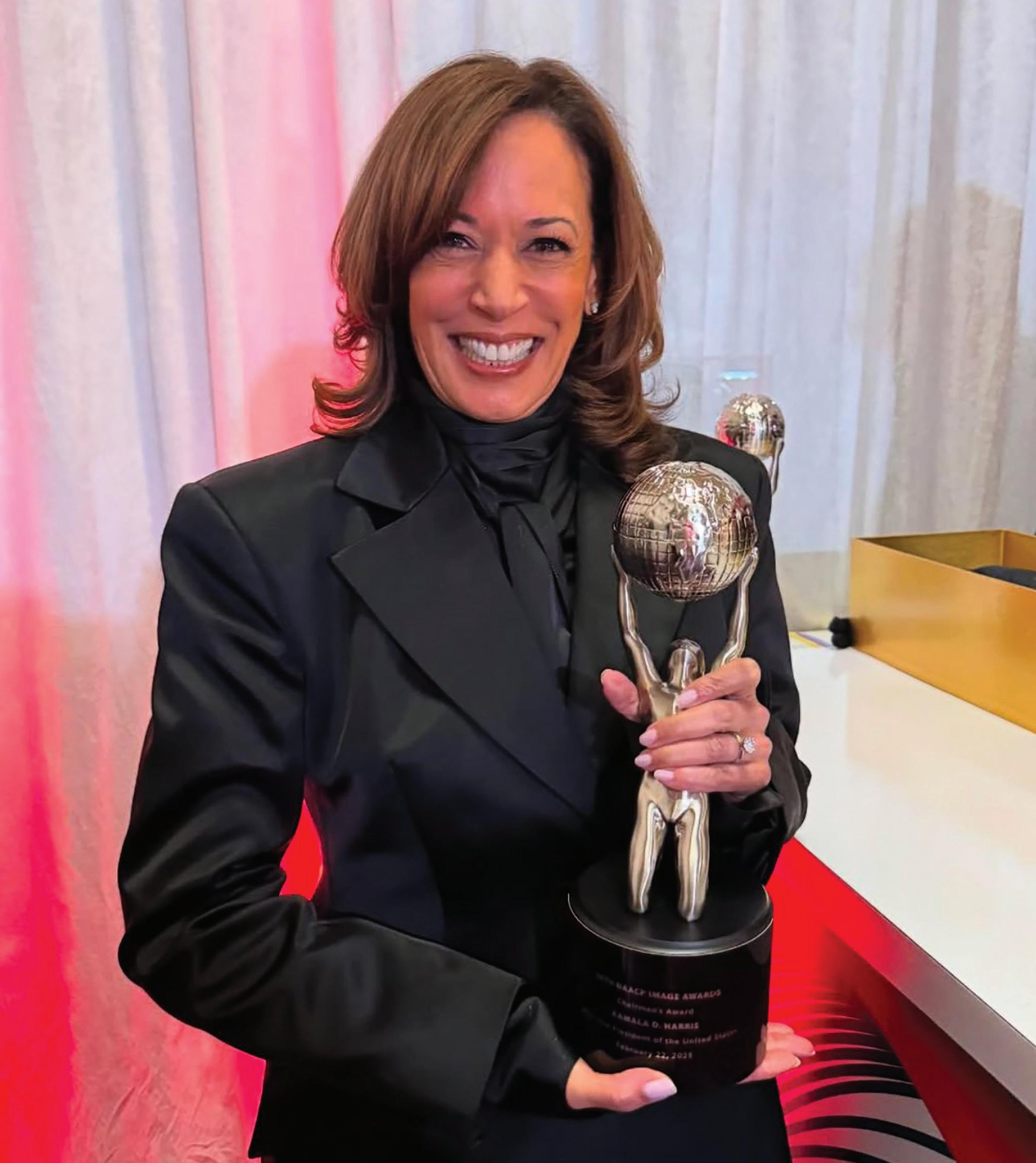
AP Film Writer
Saldaña and Kieran Culkin — all won. The SAG Awards are closely watched as an Oscar preview.
Jane Fonda, 87, given the guild’s Life Achievement Award, provided the evening with its most passionately political moment. Fonda, a famed activist, spoke indirectly about President Donald Trump’s administration.
away at this monster of a machine,” he said. Past recipients of the President's Award include Jay-Z, Lauryn Hill,
Rihanna and John Legend.
The Black Press: The Last Line of Defense as Trump Seizes Control of the National Archives
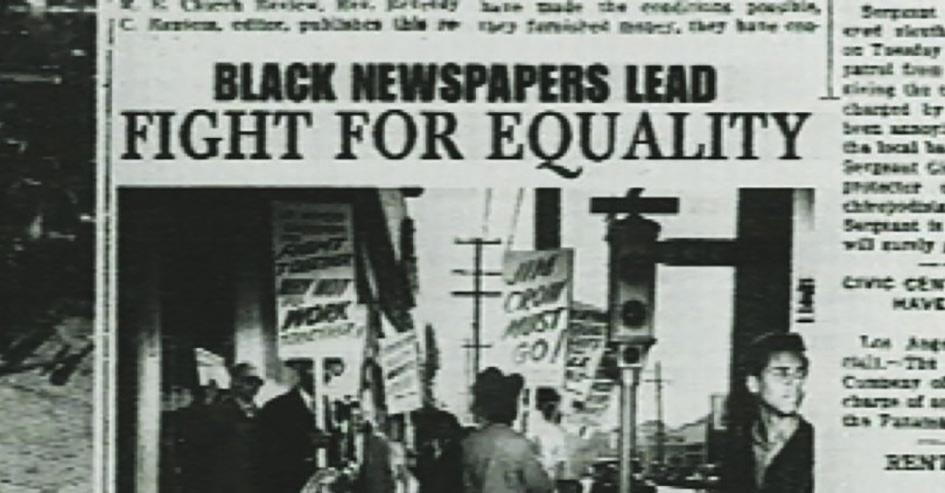
By Stacy M. Brown
Donald Trump’s recent takeover of the National Archives marks yet another chilling step in his broader campaign to rewrite history, erasing the truths that challenge his authoritarian ambitions. With the forced resignation of Acting Archivist William Bosanko, Trump and his allies are moving swiftly to reshape how American history is recorded, preserved, and ultimately remembered. This power grab, executed under the banner of Project 2025 and backed by figures like Elon Musk, is more than just an attack on government records—it is an existential threat to the preservation of Black history and the truth itself.History Under Siege
For centuries, African Americans have fought for their place in the national narrative, often relying on the Black Press as the only means to document the realities of systemic racism, discrimination, and resilience. From Ida B. Wells’ fearless reporting on lynching to the Chicago Defender’s pivotal role in the Great Migration, Black newspapers have long served as the voice of the silenced. With Trump’s grip tightening over the agency responsible for safeguarding historical records, the need for an independent, unflinching Black press has never been more urgent.
Trump’s purge at the National Archives follows a pattern of systematic erasure. His administration has already waged war on diversity, equity, and inclusion initiatives, gutted affirmative action, and worked to dismantle programs designed to level the playing field for marginalized communities. Now, by taking control of the Archives, he is moving to rewrite the nation’s past to justify the injustices of the present and future.
The forced removal of archivists and the potential installation of loyalists like Hugh Hewitt or John Solomon—far-right operatives with no historical
credentials—signal that the agency’s purpose is shifting from preservation to propaganda. Reports indicate that the Archive’s leadership under previous political influence had already begun censoring mentions of Indigenous land displacement, removing references to Japanese American internment, and even swapping out images of Martin Luther King Jr. for Richard Nixon and Elvis Presley in museum exhibits.
This power shift is part of a broader authoritarian trend, as seen in the elimination of diversity, equity, and inclusion (DEI) programs and affirmative action. The rollback of these initiatives disproportionately affects Black Americans and other marginalized communities, making the work of the Black Press more crucial than ever.
Black Press as a Corrective Force
In a recent episode of the “Seizing Freedom” podcast, journalist Adam Serwer spoke about the historical role of the Black Press in countering misinformation. “There were whole newspapers that said the Klan did not exist,” Serwer explained. “You had people who were victims of the Klan who were literally testifying in Congress about seeing people be murdered or being attacked or mutilated themselves. And you would have these Democratic-aligned papers and some Republican papers as well saying, ‘Oh, you know, the Ku Klux Klan is like a fictional invention of fevered imaginations.’ But it was completely made up, and Black newspapers were saying, ‘This is nonsense; it’s made up.”

Similarly, Ida B. Wells was relentless in exposing racial terrorism. “She was one of the people who was primarily responsible for not only countering that propaganda that was justifying that campaign of terrorism,” Serwer noted, “but for laying down a historical record that historians would use to show that it was, in fact, a propaganda campaign.”

A Dangerous Precedent
Many argue that this is not just an assault on history; it is an assault on truth. In authoritarian regimes, controlling the historical record is a crucial strategy for maintaining power. As historian George Orwell warned, “He who controls the past controls the future.” Trump’s latest move places America firmly on that trajectory, echoing tactics used by totalitarian states to whitewash history, from Stalin’s Soviet Union to China’s suppression of ‘historical nihilism.’
Onlookers have observed that Musk’s control over X (formerly Twitter) — and now the government — further illustrates the danger. Politicians, historians, and others have noted that, under Musk’s leadership, the platform has become a haven for misinformation, with accounts spreading white nationalist rhetoric and conspiracy theories while voices advocating for racial justice face suppression.
“The Black Press remains one of the last independent institutions able to challenge these narratives,” National Newspaper Publishers Association President & CEO Dr. Benjamin F. Chavis Jr. has often declared.
A Call to Action
Texas Democratic Rep. Jasmine Crockett remains among the few unafraid to speak truth to power, particularly when her Republican colleagues show ignorance of Black history. She recently lit into the MAGA loyalists who claimed white men are oppressed in America.
“There has been no oppression for the white man in this country,” she declared in a fiery, nearly two-minute speech. “You tell me which white men were dragged out of their homes. You tell me which one of them was dragged across an ocean and told they were going to work, have their wives stolen, and have their wives raped. That didn’t
happen. That is oppression.”
Crockett pointed out that Republicans are constantly trying to erase Black history from school textbooks. They want to keep American schoolchildren in the dark, she says, so they “can then misuse words like oppression”—just like her House colleagues were doing at that moment.
Writing in the Detroit Free Press, Keith Owens asserted, “You can’t erase Black history for the same reason you can’t erase air; because air simply exists whether you want it to or not. It’s not multiple-choice. Stop breathing, and you will find out. It’s science, and it’s also fact.” Owens further argued, “Any attempt to extricate Black threads from the American tapestry will result in the entire fabric becoming undone. Just to make it plain; there is no American history without Black history. That’s because there is a strong likelihood that America never would have evolved into the economic powerhouse that it became –and might not have evolved much at all – without Black Americans.”
Historians warn that suppressing history is often a precursor to further civil rights rollbacks. They argue that the Black Press must be the frontline against these efforts as it has done for centuries. “It must continue reporting on the realities that mainstream media overlooks, challenge disinformation, and preserve the voices of those history seeks to erase,” said self-described New York Amsterdam News loyalist and accountant Jonathan Ebanks. “Silence is complicity in state-sponsored amnesia. The Black Press plays a vital role in resisting this erasure,” Ebanks insisted. “The truth will not preserve itself. The Black Press must continue its mission—not just to inform but to resist.”
Black Journalists, Activists Condemn MSNBC for Firing Joy Reid

By Stacy M. Brown NNPA Newswire Senior National Correspondent
MSNBC has parted ways with Joy Reid, marking the departure of another prominent Black woman from the network. Reid joins Rashida Jones, the first Black woman to head a major cable news network, along with Melissa Harris-Perry and Tiffany Cross. All four women brought critical, unapologetic perspectives on race, politics, and power—voices that many believe are being systematically eliminated.
Bobby Henry, chairman of the National Newspaper Publishers Association (NNPA), called Reid’s removal unacceptable and urged immediate action.
“As Chairman of the National Newspaper Publishers Association (NNPA), I stand in unwavering solidarity with Joy Reid and the impactful legacy of The ReidOut,” Henry said. “Joy’s voice has been a beacon of truth, justice, and empowerment for our community, and now is the time for us to show up for her. I urge you to join us—together, we will lift our voices, strategize, and continue to support those who champion our stories. Our collective strength is our greatest asset—let’s stand united for Joy and for the future of Black journalism. The Black Press of America and Black-owned media is needed now just as we were almost 200 years ago.”
Reid’s departure has drawn immediate criticism from viewers, journalists, and activists. Kevin Simmons, a supporter of The ReidOut, wrote on X, formerly known as Twitter, “The racists are rejoicing” after MSNBC announced the show’s cancellation. “The ReidOut had a great run. Joy will be okay. Crazy this announcement comes after she just won two NAACP awards last night.”
Justice Correspondent Elie Mystal called Reid irreplaceable.
“I owe the television part of my career to Joy Reid, as do so many other Black voices y’all never would have heard of if not for her,” Mystal wrote. “And that’s why she’s gone. They can treat Black folks as interchangeable, but everybody Black knows that Joy was indispensable.”
Many have pointed out that while MSNBC cuts ties with Reid, the network keeps shows like Morning Joe, whose hosts Joe Scarborough and Mika Brzezinski reportedly visited Donald Trump at Mar-a-Lago after his 2016 victory. The decision to retain programming aligned with political power while eliminating Black voices critical of that power is being viewed as deliberate.
MSNBC’s move comes as Trump continues targeting the press. He has filed a lawsuit against 60 Minutes, claiming the program manipulated an interview with Vice President Kamala Harris. Trump also ordered federal agencies to cancel subscriptions to major outlets, including The New York Times, Politico, and Reuters, cutting public employees off from independent news sources. He has praised Fox News as his administration’s “official” media outlet, further tightening control over the information pipeline.
Trump has declared that only the president can decide what is lawful—a statement more in line with authoritarianism than constitutional democracy. Henry, the NNPA chairman, said the Black community must remain vigilant.
“Our collective strength is our greatest asset,” he said. “Let’s stand united for Joy and for the future of Black journalism.”of Black journalism.”
In Unexpected Move, Calif. Republican Lawmaker Bill Essayli
Introduces
By Antonio Ray Harvey California Black Media
Last month, about 100 reparations advocates met at the State Capitol to build support for bills they backed that didn’t make it to the Assembly floor for votes during the last legislative session.
During the day-long event -- titled Reparations Education and Advocacy Day (R.E.A.D) -- members of 20 grassroots organizations announced that they were willing to work with any lawmaker, Republican or Democrat, who would help to advance their cause.
Last week, the advocates found support in an unlikely campaigner: Bill Essayli (R-Corona), a Republican lawmaker, who just last year stated he does not support using taxpayer money to pay for reparations.
In a Feb. 21 press release, the Coalition for a Just and Equitable California (CJEC) stated that the “movement to recognize and support American Freedmen residents is a nonpartisan effort” that prioritizes sound “policy over political affiliation.”
CJEC is the statewide organization at the forefront of mobilizing grassroots efforts for reparations and reparative Justice for “Freedmen,” a term used to describe Black Americans who are descendants of slaves in the United States.
“Over the coming days and weeks, additional provisions will be added to further honor the state’s responsibility to serve and develop policies for American Freedmen residents directly, such as in areas of business, housing, and education, instead of non-profit organizations with little to no transparency and public accountability,” CJEC’s release stated.
Essayli, a former Riverside County prosecutor and the first Muslim American elected to the California Legislature, introduced Assembly Bill (AB) 1315 Feb. 21, legislation that would create the California American Freedmen Affairs Agency (CAFAA). Essayli says he is presenting the bill with the support of members of CJEC.
“I have introduced AB 1315 to deliver on a broken promise and engage in an honest discussion about creating opportunities for American Freedman instead of more empty political rhetoric from the Democrat Party,” Essayli shared with California Black Media (CBM) on Feb. 22.
But some political watchers and skeptical Democrats are questioning the motives behind Essayli’s sudden and unexpected support of reparations policy.
At press time, Essayli had not announced the introduction of AB 1315 on his website or social media pages.
Some are also pointing out the inconsistency in his position on reparations.
For example, the Black LA Young Democrats reposted a screenshot of Essayli’s post on X form last year, stating that he doesn’t support taxpayer-funded reparations.
“All Black Folks in California are watching y’all getting played,” the Black LA Young Democrats wrote, referring to CJEC.
“The drum beat for reparations is growing louder,” Essayli posted on X last year. “Today’s resolution, ACR 135, was the first step and formally recognized the harms of slavery committed by the State of California (even though we were never a slave state.)”
Essayli followed that post with this: “I’m very much opposed to CA taxpayers paying reparations.”
Essayli made that statement following a floor speech acknowledging an Assembly resolution that apologized for slavery.
In Essayli’s new bill, AB 1315, he proposes the creation of the California American Freedman Affairs Agency (CAFAA) a state-level department that would create a genealogy office to process eligibility requests and provide a legal arm to support reparations claims.
The bill mirrors many of the provisions in Senate Bill (SB) 1403 authored by former state Sen. Steven Bradford, who represented the 35th District in Los Angeles County before
Reparations Bill
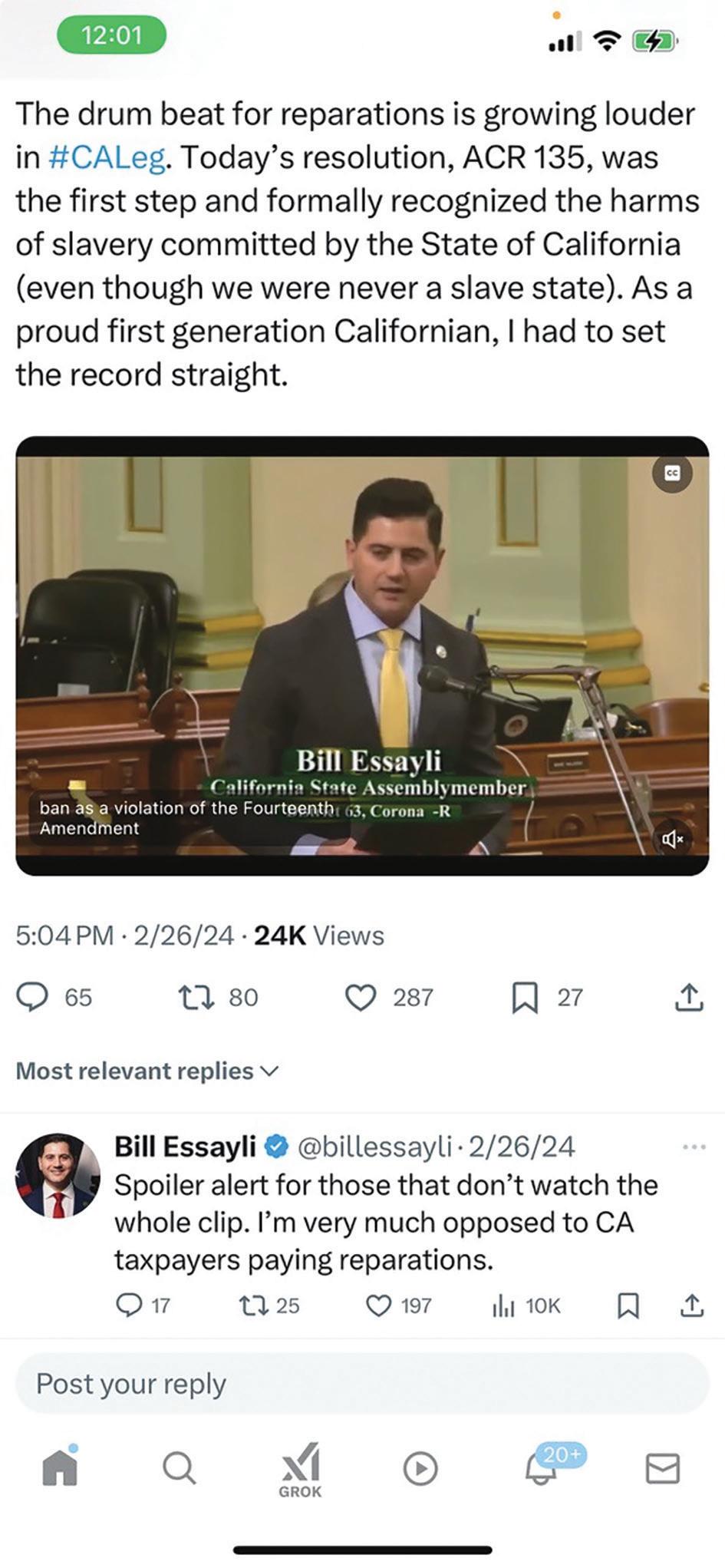
terming out last year.
Bradford’s bill, SB 1403, also called for establishing CAFAA as a state-level department that would administer all reparations activities. However, some members of the CLBC did not support the bill moving to the Assembly floor for a vote because they said it “ceded legislative authority, which is critical given the generational impact this legislation would have.”
“We understand the legislative process is complex and does not always unfold as initially envisioned,” the CLBC’s said in a statement. “However, we remain committed to our long-term goals and recognize that this is a multi-year effort.”
CJEC has however blamed the stalling of the bill on the CLBC and expressed their disappointment and outrage.
Last year, according to Bradford, Essayli offered to bring his bills up for a floor vote. but Essayli told Bradford then that he would not vote for the legislation he sponsored. Bradford declined the offer.
“I seriously wonder if @billessayli will be able to keep a straight face if this comes to the floor. Half the audience will laugh, then protesters will start yelling and boom – the GOP has
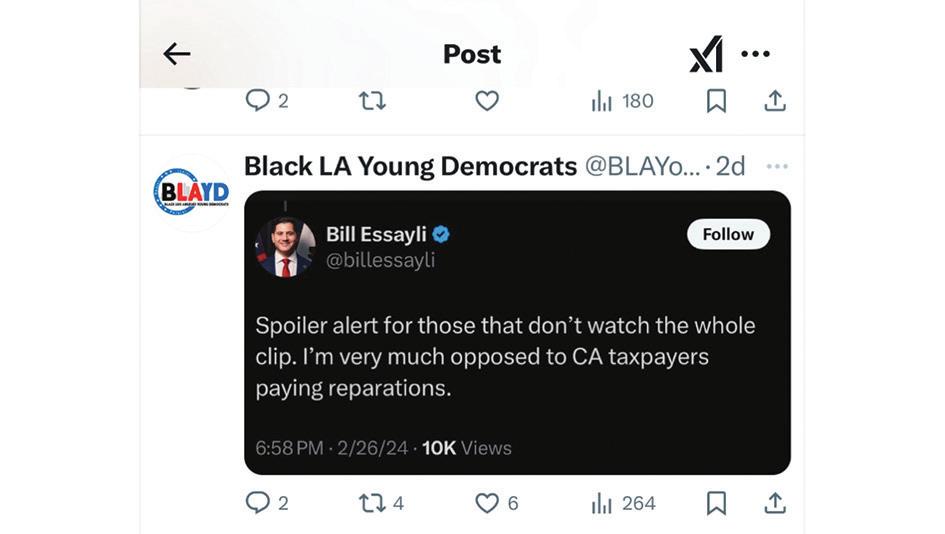
enough footage of the scene to covers years of campaign ads,”
wrote OakSyder, a commentor on X. News of Essayli’s AB 1315 arrived a day after the CLBC presented a 16-bill package with several reparations and reparative justice priorities.
“This bill (AB 1315) does not require further study before it can become operable, instead, it initiates real steps toward progress immediately,” CJEC stated in response to the CLBC bill package.
“For too long, the Democrat Party has lied to Black voters and delivered nothing decade after decade,” Essayli told CBM.
“This was most recently on display with the bait and switch by the California Legislative Black Caucus which killed SB 1403 in the final hour of the legislative session last year.”
Assemblymember Isaac Bryan (D-Ladera Heights) says he looks forward to questioning Essayli when a hearing on AB 1315 is held.
“The author won’t publicly claim CJEC’s bill, or clarify if he believes all debts owed to American Descendants of Slavery should be paid in full – including monetary compensation,” Bryan posted on X.
“There’s one Black man on the Judiciary Committee who gets to ask all the right questions,” Bryan said, referring to himself.
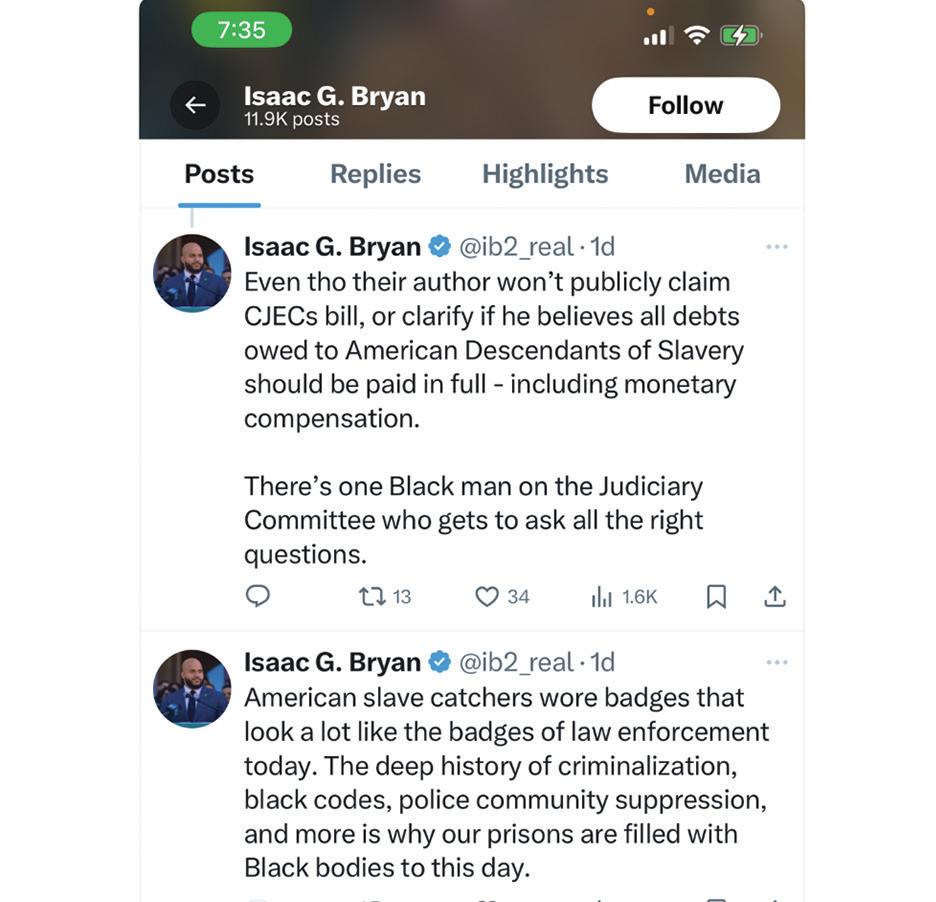
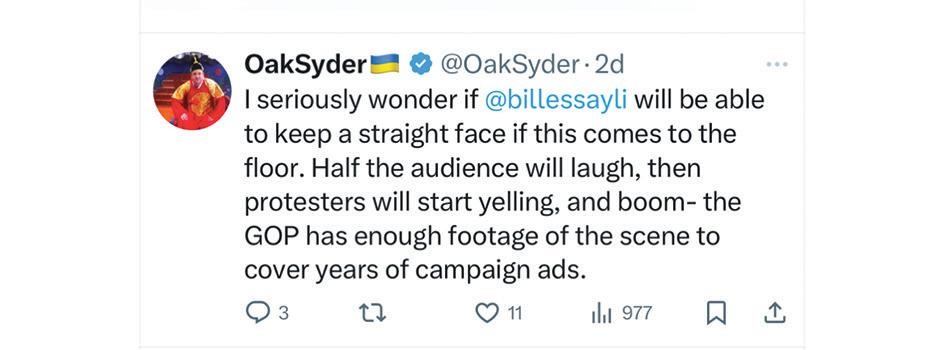
Modern Love, Black Voices: BLK’s First ‘State of Black Singles’ Report Uncovers Shifting Dating Norms
Stacy M. Brown
NNPA Newswire Senior National Correspondent
BLK, the leading social and dating app for Black singles, has released its inaugural State of Black Singles report, revealing the evolving dynamics of love, sex, and relationships within the Black community. Drawing on thousands of responses from Black singles across the United States, the comprehensive study sheds light on shifting sexual preferences, the growing influence of social media on dating, and the changing landscape of relationship norms.“We wanted to have a real conversation about what’s actually happening in Black dating culture— no fluff, no filters,” said Jonathan Kirkland, Head of Brand and Marketing at BLK. “This report proves that Black singles are pushing boundaries, redefining norms, and making their own rules when it comes to relationships, sex, and self-expression.”Sexual Attitudes: A New Era of Openness with Defined Boundaries The report reveals that Black singles are increasingly embracing modern sexual exploration while still observing certain limits. Notably, 88% of respondents consider oral sex a necessity in their relationships, while nearly half (45.4%) are fully engaged in phone sex and cam play. Interest in group play is also on the rise, with 70% expressing curiosity or experience with threesomes, swinger parties, or orgies. Midnight to early morning (12 a.m. to 6 a.m.) sexual encounters are preferred by 27.7% of participants, though evening intimacy remains most popular at 33.3%. Surprisingly, workplace romances are common, with 51.8% admitting to having been involved with a coworker. Additionally, 43.9% disclosed hooking up with someone already in a committed relationship. “The idea of ‘taboo’ is fading,” Kirkland said. “Black singles are owning their pleasure, exploring new experiences, and challenging outdated stigmas.”

attitudes toward parenthood vary: Gen Z respondents show strong interest in having children (83%), compared to 33.5% of overall respondents who are not interested in raising kids.
“People want the freedom to build relationships that work for them, not necessarily what their parents had,” Kirkland noted. “Black singles are still open to commitment, but it has to be on their terms.” Identity, Self-Expression, and the Fight for Representation
Despite an increased focus on diversity, many Black singles feel overlooked in the dating space. Only 25.7% say they feel fully represented on mainstream dating apps, and 30.3% believe that media outlets inadequately portray authentic Black love. Additionally, 21.8% of respondents admit to “code-switching” in dating environments to conform to perceived expectations.
“We’ve always known that dating apps weren’t inherently built for us—but seeing the data proves how much work still needs to be done,” Kirkland said.
Interestingly, while 70% of Black singles feel represented in mainstream media, a significant number still struggle to find dating platforms that reflect their experiences. Real-life connections are making a comeback, with 53% of singles reporting better matches at social events and community gatherings compared to digital platforms.
Looking Ahead As Black singles explore the changing world of modern dating, BLK’s State of Black Singles report hopes to serve as a vital resource for understanding the evolving landscape. Researchers assert that, with authenticity, selfexpression, and open-mindedness at the forefront, Black daters are reshaping how love and connection are defined in 2025.
“Black singles are redefining what intimacy and connection look like in today’s world,” Kirkland concluded. “This report is just the beginning of a larger conversation about how we can all embrace love and relationships on our own terms.”
Texas Measles Outbreak Nears 100 Cases, Raising Concerns About Undetected Spread
By Amy Maxmen
Some private schools have shut down because of a rapidly escalating measles outbreak in West Texas. Local health departments are overstretched, pausing other important work as they race to limit the spread of this highly contagious virus.
Since the outbreak emerged three weeks ago, the Texas health department has confirmed 90 cases with 16 hospitalizations, as of Feb. 21. Most of those infected are under age 18. Officials suspect that nine additional measles cases reported in New Mexico, across the border from the epicenter of the Texas outbreak in Gaines County, are linked to the Texas outbreak. Ongoing investigations seek to confirm that connection.
Health officials worry they’re missing cases. Undetected infections bode poorly for communities because doctors and health officials can’t contain transmission if they can’t identify who is infected.
“This is the tip of the iceberg,” said Rekha Lakshmanan, chief strategy officer for The Immunization Partnership in Houston, a nonprofit that advocates for vaccine access. “I think this is going to get a lot worse before it gets better.”
An unknown number of parents may not be taking sick children to clinics where they could be tested, said Katherine Wells, the public health director in Lubbock, Texas. “If your kids are responding to fever reducers and you’re keeping hydrated, some people may keep them at home,” she said.
Most unvaccinated people will contract measles if they’re exposed to the airborne virus, which can linger for up to two hours indoors. Those infected can spread the disease before they have symptoms. Around 1 in 5 people with measles end up hospitalized, 1 in 10 children develop ear infections that can lead to permanent hearing loss, and about 1 in 1,000 children die from respiratory and neurological conditions.
Gaines has a large Mennonite population, which

Most unvaccinated people will contract measles if they’re exposed to the airborne virus, which can linger for up to two hours indoors. Those infected can spread the disease before they have symptoms. (MOMENT/GETTY IMAGES)
often shuns vaccinations. “We respect everyone’s right to vaccinate or not get vaccinated,” said Albert Pilkington, CEO of the Seminole Hospital District, in the heart of the county, in an interview with Texas Standard. “That’s just what it means to be an American, right?”
Local health officials have been trying to persuade the parents of unvaccinated children to protect their kids by bringing them to pop-up clinics offering measles vaccines.
“Some people who were on the fence, who thought measles wasn’t something their kids would see, are recalculating and coming forward for vaccination,” Wells said.
Local health departments are also operating mobile testing units outside schools in an attempt to detect infections before they spread. They’re staffing clinics that can provide treatment prophylactically for infants exposed
to the virus, who are too young for vaccination. Local health officials are advising day care centers on how to protect young children and babies, and educating school nurses on how to spot signs of the disease.
“I am putting 75% of my staff on this outbreak,” Wells said. Although Lubbock isn’t at the center of the outbreak, people infected have sought treatment there. “If someone infected was in the [emergency room], we need to identify everyone who was in that ER within two hours of that visit, notify them, and find out if they were vaccinated.”
Local health departments in rural areas are notoriously underfunded. Wells said the workload has meant pressing pause on other programs, such as one providing substance abuse education.
Zach Holbrooks, executive director of the South Plains Public Health District, which includes Gaines, said health officials were following Centers for Disease Control and Prevention guidelines, as of last year, by advising schools to keep unvaccinated children home for 21 days if they shared a classroom or the cafeteria with someone infected. This means that many parents may need to stay home from work to care for their kids.
“A lot of private schools have closed down because of a high number of sick children,” Holbrooks said.
The burden of measles outbreaks multiplies as the disease spreads. Curbing a 2018 outbreak in Washington state with 72 cases cost about $2.3 million, in addition to $76,000 in medical costs, and an estimated $1 million in economic losses due to illness, quarantines, and caregiving.
Public health researchers expect such outbreaks to become larger and more common because of scores of laws around the U.S. — pending and recently passed — that ultimately lower vaccine rates by allowing parents to exempt their children from vaccine requirements at public schools and some private schools.
Such policies are coupled with misinformation about childhood vaccination now platformed at the highest levels of government. The new director of the Department
of Health and Human Services, Robert F. Kennedy Jr., has erroneously blamed vaccines for autism, pointing to discredited theories shown to be untrue by more than a dozen scientific studies. In Kennedy’s first week on the job, HHS postponed an important meeting of the CDC’s Advisory Committee on Immunization Practices, without saying when it would resume. In addition, the CDC’s letter template to school principals, advising unvaccinated children to remain home from school for 21 days if they’ve been exposed to the measles virus, is no longer on the agency’s website. An old version remains posted on its archive. As a rule, at least 95% of people need to be vaccinated against measles for a community to be well protected. That threshold is high enough to protect infants too young for the vaccine, people who can’t take the vaccine for medical reasons, and anyone who doesn’t mount a strong, lasting immune response to it. Last school year, the number of kindergartners exempted from a vaccine requirement was higher than ever reported before, according to the CDC. In Gaines, exemptions were far higher than the national average, approaching 20% in 2023-24. Gaines has one of the lowest rates of childhood vaccination in Texas. At a local public school district in the community of Loop, only 46% of kindergarten students have gotten vaccines that protect against measles. Amid an outbreak that displays the toll of measles in under-vaccinated pockets of America, Texas lawmakers have filed about 25 bills in this year’s legislative session that could limit vaccination further. Lakshmanan said the public — the majority of whom believe in the benefits of measles vaccination — should contact their representatives about the danger of such decisions. Her group and others offer resources to get involved.
“We’ve got children winding up in the hospital, and yet lawmakers who’ve got their blinders on,” she said, referring to pending policies that will erode vaccination rates. “It’s just mind-blowing.”
Republicans Are Eyeing Cuts to Medicaid. What’s Medicaid, Again?
By Renuka Rayasam and Sam Whitehead
In January, during a congressional hearing on his way to becoming secretary of the Department of Health and Human Services, Robert F. Kennedy Jr. got basic details wrong about Medicaid — a program he now oversees. He said that Medicaid is fully funded by the federal government (it’s not) and that many enrollees are unsatisfied with high out-of-pocket costs (enrollees pay limited, if any,
out-of-pocket costs). Medicaid is complex. The $880 billion-a-year statefederal program offers health coverage to millions of disabled and low-income Americans. The program covers different services for different people in different parts of the country — and enrollees may interact with private insurance companies without “Medicaid” in their names, leaving some unaware that they’re on the program at all.

Although President Donald Trump promised to “love and cherish” Medicaid, Republicans in Congress last week announced federal budget proposals that could dramatically curtail the program. As that debate begins, here is what you need to know about Medicaid.
What is Medicaid, and how is it different from Medicare?
Medicaid and Medicare were created by the same legislation — an addition to the Social Security Act — that was signed into law by President Lyndon B. Johnson in 1965.
Medicaid is a government health insurance program for people with low incomes and adults and children with disabilities.
Medicare, by contrast, generally covers those 65 or older.
For older Americans with low incomes, Medicaid covers out-of-pocket costs for Medicare. Such people are commonly called “dual eligibles,” because they qualify for both programs.
Who is on Medicaid?
More than 79 million people receive services from Medicaid or the closely related Children’s Health Insurance Program. That represents about 20% of the total population of the United States. Most enrollees qualify because of low incomes.
About 40% of all children in the country are covered by Medicaid or CHIP, created in 1997. Both pay for services such as routine checkups, vaccinations, and hospital stays. Medicaid also covers pregnant people before and after they give birth and pays for more than 40% of all births.
Medicaid also covers people with disabilities or complex medical needs and helps them afford services that allow them to live independently in community settings, outside of institutions such as nursing homes and state-run hospitals.
The program serves a diverse cross section of the country. About 40% of people under 65 who use Medicaid are white, 30% are Hispanic, 19% are Black, and 1% are Indigenous people.
Federal Medicaid dollars cannot be used to cover immigrants who are in the U.S. without legal permission, though some states, as well as Washington, D.C., have used their own funds to extend Medicaid coverage to such individuals. California was the first state to do so.
What are the income qualifications?
Eligibility generally depends on whether a person is low income, and states have different ways of defining that.
For a four-adult household without dependent children, the current national median coverage level is $44,367.
The Affordable Care Act, often called Obamacare, which passed in 2010, allowed more people to qualify for Medicaid on the basis of income. This is what is known as “Medicaid expansion.”
The law offered states a sizable incentive to add more people to their programs: The federal government would pitch in more money per enrollee to help cover them.
The intention behind the expansion was to close gaps in health insurance programs for the millions of Americans who don’t get coverage through an employer. Medicaid would cover people with extremely low incomes, and as their incomes rose, they could move to subsidized health plans sold through the Affordable Care Act’s exchanges.
In 2012, the U.S. Supreme Court said the decision of whether to expand the program would be left up to individual states. Today, 40 states and the District of Columbia — led by Democrats and Republicans alike — have opted in.
In the 10 states that haven’t expanded Medicaid to more low-income adults, the median earnings qualification level is $5,947 a year for a single-person household in 2025. Those who make more are not eligible.
Adults in those states who make too much for Medicaid can also make too little to qualify for help buying plans on the Affordable Care Act exchanges, leaving some unable to afford coverage. An estimated 1.5 million fall into this coverage gap.
Where does the money to pay for it come from?
The federal government pays most of the cost of Medicaid by matching a portion of what states spend.
Currently, the federal government matches at least 50% of state spending and offers states more money for some services and enrollees — for instance, for children and pregnant women.
Less wealthy states — determined by considering residents’ per capita incomes — receive a higher match, translating to a higher percentage of federal dollars. In
Mississippi, for instance, the federal government picks up 77% of the cost of Medicaid. States also receive a 90% match from the federal government for enrollees
There is no limit on how much states can spend on the program, and hundreds of billions of federal dollars flow

into states each year. In 2023, states spent about 15% of their own budgets on Medicaid.
What does that money pay for?
Federal law requires all state Medicaid programs to cover certain services, including emergency medical transportation, X-rays and lab work, family planning, and medication-assisted treatment for people with opioid use disorder. The program also covers many nursing and home health services, though federal law allows those benefits to be clawed back after an enrollee’s death.
Beyond that, states have the flexibility to choose the services their Medicaid programs cover. All states cover prescription drugs, and most cover eyeglasses, some dental care, and physical therapy.
Medicaid covers more mental health and long-term care services than any other type of insurance, public or private.
What is Medicaid called in my state?
Medicaid programs can go by many different names, even within the same state, in part because most states use private insurance companies to run them. This can be confusing for consumers who may not realize they are actually enrolled in Medicaid.
In New York, for instance, Medicaid plans are offered by major companies, such as Anthem Blue Cross Blue Shield and UnitedHealthcare — and some you may not have heard of, such as Amida Care and MetroPlusHealth. In Wisconsin, enrollees may be in BadgerCare Plus; in Connecticut, Husky Health; in Texas, STAR; and in California, Medi-Cal. How does Medicaid affect hospitals and doctors in my state?
Medicaid generally pays health care providers such as doctors and hospitals less money for services than Medicare or private insurance does. But it can be more money than they’d
California Capitol News You Might Have Missed Political Playback
By Bo Tefu California Black Media
“The American Story Will Be
Written By US: Kamala Harris
Speaks at the NAACP Image Awards
In a speech at the 56th annual NAACP Image Awards -- held Feb. 22 at the Pasadena Civic Auditorium -- former Vice President Kamala Harris delivered an upbeat speech, reminding the audience that the future of America “is bright and that they hold the power to determine the course of the country’s future.
In her first major public appearance since she left office, Harris was honored with the NAACP’s prestigious Chairman’s Award.
The NAACP Chairman’s Award honors individuals who “excel in public service and leverage their unique platforms to ignite and drive meaningful change.”
“Eternal vigilance is the price of Liberty,” said Harris, who received a standing ovation when she walked on stage. “To stay alert, to seek the truth, and to actively participate in the fight for America’s future.
Harris said the NAACP came into being at a time America struggled with greed, bitterness and hatred.
“Those who forged the NAACP, those who carried its legacy forward, had no illusions about the forces they were up against -- no illusions about how stony the road would be,” Harris continued.
“Some look at this moment and rightly feel the weight of history. Some see the flames on our horizons, the rising waters in our cities, the shadows gathering over our democracy, and ask, ‘What do we do now?’ But we know exactly what to do, because we have done it before, and we will do it again.”
Ending on an optimistic note, Harris said she has no illusions about the challenges ahead.
“This chapter of our American story, this chapter will be written not simply by whoever occupies the Oval Office -- nor by the wealthiest among us,” she said. “The American story will be written by you, written by us -- by we the people. Thank you, God bless you, and God bless the United States.”
U.S. Rep. Lateefah Simon Introduces First Bill in Congress
U.S. Rep. Lateefah Simon (D-CA-12) introduced her first bill in Congress last week.
“The Assisting Small Businesses Not Fraudsters Act,” aims to reduce fraud in government aid programs for small businesses. The bipartisan legislation, co-sponsored by Small Business Committee Chair Roger Williams (RTX-25), seeks to ensure that only eligible small businesses benefit from federal financial support.
The bill amends the Small Business Act to bar individuals and entities convicted of financial fraud -- or making false statements related to grants -- from receiving non-disaster-related financial assistance from the Small Business Administration (SBA). This includes grants and contracts intended to support small businesses, particularly in the wake of the COVID-19 pandemic.
Simon addressed growing concern over fraud in the SBA’s pandemic relief programs such as the Paycheck Protection Program (PPP) as she emphasized the bill’s importance.
“While small businesses faced unprecedented challenges during the COVID-19 pandemic, some exploited vital resources meant for struggling businesses,” said Simon.
“My bill ensures that those who have exploited the system will not be able to take advantage of future opportunities,” she added.
The bill is part of Simon’s broader effort to provide long-term support to small businesses across her district, which includes Oakland and other parts of Alameda County.
Community Town Hall with Congressman Pete Aguilar Addresses Urgent Issues Impacting Inland Empire Residents
Local residents gathered at the San Bernardino
By Stacy M. Brown NNPA Newswire Senior National Correspondent
The Black Press warned Americans. The NAACP warned Americans. Texas Democratic Rep. Jasmine Crockett warned Americans. Several others who paid attention to the Heritage Foundation’s Project 2025 sounded the alarm too. Yet, despite Donald Trump’s lies and attempts to distance himself from the plan’s hateful and destructive mandate, reality has set in. Less than one month into his presidency, Politico noted that Project 2025 has shown up in 37 of Trump’s executive orders, placing its architects squarely in power and moving swiftly to reshape the nation’s policies. Despite public denials, the fingerprints of the far-right Heritage Foundation’s sweeping agenda are unmistakable.
Among the immediate actions are Trump’s reinstatement of harsh immigration policies, directives rolling back civil rights protections, and a push to gut the Department of Education’s diversity programs—each item aligning with the Project 2025 blueprint. Executive orders dismantling environmental safeguards, restricting reproductive rights, and granting broad powers to law enforcement have followed, echoing the project’s call for a return to what its authors describe as “traditional American values.” “This is exactly what we warned about,” Rep. Crockett said. “They’re moving with precision, targeting the most vulnerable communities first—immigrants, Black and brown people, LGBTQ+ folks—and they’re doing it under the guise of restoring law and order.”
The Black Press of America issued numerous reports
Community Center for a town hall hosted by members of the Black American Political Action Committee (BAPAC), National Council of Negro Women (NCNW), and the San Bernardino NAACP. The forum provided opportunities to engage directly with Congressman Pete Aguilar, who represents California’s 33rd Congressional District, and discuss key issues affecting the region.
Rep. Pete Aguilar(D-CA-33) spoke candidly about the challenges posed by the Trump administration’s proposed budget cuts, particularly the potential impact on healthcare programs like Medi-Cal, which q serves underserved communities in San Bernardino and Riverside counties.
He expressed concerns about the $4 trillion budget cuts over the next decade, highlighting the risks to healthcare and education, especially for vulnerable populations. “This is a budget that could slash $880 billion from healthcare, which would make it more difficult for our residents, our neighbors, and our kids to access the care they need,” Aguilar said. “We need to fight these cuts with everything we’ve got. It’s about protecting our communities.”
During the discussion, Aguilar also stressed the importance of local governments and public education

funding, noting how cuts to Title 1 schools and support for students with disabilities could harm the community.
“This isn’t just a budget fight. It’s about the future of our children, our healthcare, and our families. We need to stay vigilant,” he added.
The event also gave attendees the chance to ask questions about immigration, social security, and the future of national policies, reinforcing the need for continued grassroots activism.
Former Assemblymember Cheryl Brown (D-San Bernardino) emphasized the importance of speaking directly with elected officials. “We need to ensure that the community understands that our elected officials should be in touch with the people they represent. We must show up, especially in districts represented by Republicans, to ensure they hear the concerns of their constituents,” Brown said.
“It’s crucial that we all stand together, because these issues affect us all.” Many attendees expressed being unsettled with the direction the country is heading and urged action to advocate for their communities’ needs. “We need to take action now,” Brown concluded, “Our voices must be heard.”
Assemblymember Lori Wilson Introduces Patient Protection Bill
Assemblymember Lori D. Wilson (D-Suisun City) has introduced Assembly Bill (AB) 577, legislation designed to protect patients with serious illnesses, such as cancer and rheumatoid arthritis. The bill aims to ensure that patients can receive essential infusions and prescription drugs directly from their own doctors if deemed necessary for their well-being. According to Wilson, the bill was written to address hardships experienced by patients who currently have to travel to distant infusion centers or other healthcare
facilities for treatments. AB 577 seeks to give physicians the ability to manage and administer these treatments in their own offices.
“It is vital that physicians have the ability to manage and administer treatments within their own offices, especially for those who are medically frail or have a history of allergic reactions,” said Wilson regarding the bill.
The bill has garnered support from various medical organizations, including the California Rheumatology Alliance and oncology associations. Dr. Millie Das, president of the Association of Northern California Oncologists, and Dr. Ashkan Lashkari, president of the Medical Oncology Association of Southern California, expressed strong support for the legislation. They emphasized that the bill would help protect oncology care from unnecessary interference by pharmaceutical benefit managers (PBMs) and insurance companies.
“Protecting the doctor-patient relationship in oncology is crucial to saving lives,” the association wrote in a statement supporting the new law.
Samy Metyas, President of the California Rheumatology Alliance, echoed this sentiment, stressing that treatment decisions should be made solely between a patient and their healthcare provider, free from the influence of insurance or profit-driven interests.
If passed, AB 577 will prevent health plans, PBMs, and insurers from imposing restrictive policies that limit a physician’s ability to administer treatments within their own practice, thereby improving access and care for vulnerable patients across the state.
Newsom Appoints Three Black Superior Court Judges; One Black Appellate Judge Confirmed
Last week, Gov. Gavin Newsom appointed three Black judges to Superior Courts across California. The Commission on Judicial Appointments also confirmed a Black Judge, Charles Smiley, that Newsom appointed in November to the state’s Courts of Appeal.
Chief Justice Patricia Guerrero, chair of the commission, announced the unanimous confirmation of Judge Charles Smiley to the First Appellate District, Division One, in San Francisco. Smiley, an Alameda County Superior Court judge since 2012, fills the vacancy left by the retirement of Justice Sandra L. Margulies.
Newsom’s judicial appointments last week included seven judges in Los Angeles County and others in Modoc, Riverside, San Diego, San Mateo, Tulare, and Ventura counties. Among them are three Black judges appointed to Superior Courts: James Montgomery Jr. (Los Angeles County Superior Court), a former court commissioner and attorney.
Chandra Reid (San Diego County Superior Court), a former Deputy District Attorney with nearly two decades of prosecutorial experience.
Mark McCannon (San Mateo County Superior Court), previously an Alameda County judge and prosecutor.
Trump Admin Blocks $384 Million in EV Funding Set for California
California’s U.S. Senators, Alex Padilla and Adam Schiff, along with Democratic members of the Senate Committee on the Environment and Public Works (EPW), are demanding answers from the U.S. Department of Transportation (DOT) following the sudden freeze of funding for the National Electric Vehicle Infrastructure (NEVI) Formula Program.
This program, authorized under the Bipartisan Infrastructure Law, is designed to accelerate the construction of zero-emission vehicle charging stations across the U.S. It granted California $384 million over five years to expand its electric vehicle (EV) charging infrastructure.
California’s plan was approved in September 2023 by the Biden administration, but earlier this month the
Trump Administration froze $3 billion allocated to the NEVI program, halting planned construction. In a letter to DOT Secretary Sean Duffy, Padilla and Schiff expressed concern that the decision undermines years of planning and effort by state transportation departments. They argued that the freeze disregards Congress’s constitutional authority over federal spending and threatens the environmental and economic benefits the program was set to deliver.
“Your abrupt cutoff of NEVI funding disregards these efforts and subjects states and their partners to delay, uncertainty, and bureaucratic red tape. It also threatens the jobs, innovation, and environmental benefits that this program was ready and authorized to deliver through implementation,” the senators wrote in a letter to the president.
The NEVI program aims to make electric vehicles more accessible by installing charging stations every 50 miles along major travel corridors, promoting clean energy and reducing dependence on fossil fuels. The Senators requested that the funding freeze be immediately reversed and demanded answers on the legal grounds for the decision. They also called for the release of documents related to discussions involving the White House, the Office of Management and Budget, and other key figures.
The freeze could delay critical infrastructure projects and disrupt the transition to zero-emission vehicles, particularly in rural areas, where access to charging stations is limited. The Senators’ letter was signed by several other lawmakers, including Senators Sheldon (D-RI) Whitehouse, Lisa Blunt Rochester (D-DE), and Bernie Sanders (D-VT).
“Hispanic Legislative Caucus”: Conservative Latino Lawmakers Form Separate Group From Dem Counterparts
Nine Latino Republican lawmakers in California have created their own legislative group, the California Hispanic Legislative Caucus, after being excluded from the Democratic-led Latino Legislative Caucus.
The new GOP caucus aims to focus on issues such as education, public safety, and affordability, which they believe have been overlooked by their Democratic counterparts who they say focus primarily on issues like immigration and healthcare.
Sen. Suzette Martinez Valladares (R-Acton), who helped form the caucus, stated that the experiences of Latino Republicans differ from those of the Latino Legislative Caucus.
“My experience as a Latino is different than that of my immigrant grandmother,” said Martinez Valladares.
“The issues the Latino community want to focus on have been ignored by Sacramento,” she said.
Martinez Valladares highlighted the shift in Latino political perspectives, noting that issues like economic challenges and cost of living resonate across party lines. Valladares and other members, such as Assemblymember Kate A. Sanchez (R-Trabuco Canyon), believe the new caucus will better represent a diverse range of priorities within the Latino community, particularly in workingclass, blue-collar communities.
Latino demographics expert and Republican political consultant Mike Madrid supports the formation of the new caucus.
“I view this as a very healthy development for the Latino community,” said Madrid.
“I don’t think either party has ever had a monopoly on the hearts and minds of the Latino community,” he said.
This development comes as California’s Latino population grows and becomes more politically diverse, with increasing numbers of Latino Republicans. According to experts, many Latino voters, especially Latino men, shifted toward the Republican Party in the 2024 elections, signaling a shift in political priorities. While the Democratic Latino Caucus has long focused on issues like immigration reform and farmworker rights, the Republican caucus aims to address concerns like affordability and economic mobility.
before the election detailing how Project 2025 aims to strip away civil liberties and concentrate power in the executive branch. Critics say the speed at which these policies are being implemented proves that Trump’s earlier denials were calculated deception. The NAACP released a statement emphasizing the stakes: “This is not about politics—this is about survival,” officials at the nation’s oldest civil rights organization stated. “Communities of color will bear the brunt of these policies. We told you this was coming.”
Behind the scenes, Trump has appointed several Heritage Foundation affiliates to top White House positions. John McEntee, one of Project 2025’s key contributors, now oversees personnel decisions, ensuring federal agencies align with the agenda’s hardline stance. Meanwhile, another architect of the plan, Russell Vought, plays a central role in rewriting federal budget priorities to defund programs that benefit marginalized groups. The executive orders have included eliminating funding for diversity, equity, and inclusion initiatives across government agencies, establishing federal penalties for “disruptive” protests, and reinstating the controversial “Remain in Mexico” immigration policy.
“Donald Trump can pretend he’s not involved, but look at the people in his administration,” said Derrick Johnson, president of the NAACP. “Look at the policies being pushed through with record speed. This is Project 2025 in action.” Many of Trump’s moves echo those listed in the Heritage Foundation’s publicly available 920-page blueprint. The document outlines plans to overhaul the Department of Justice, weaken protections against police brutality, and limit LGBTQ+ rights, all of which have been
reflected in Trump’s recent directives. Civil rights organizations are rallying to fight back, filing lawsuits, and urging Americans to mobilize. Still, the road ahead remains steep, with Republican-controlled legislatures supporting many of these initiatives. “There’s no time for complacency,” Rep. Crockett said. “What we are witnessing is the normalization of fascism disguised as patriotism.”

Former Assemblymember Cheryl Brown moderated a town hall with Congressman Pete Aguilar and local Inland Empire residents on February 20, 2025. CBM staff photo.
California Legislative Black Caucus 2025 Legislative Package Includes Reparations Priorities
By Antonio Ray Harvey California Black Media
The California Legislative Black Caucus (CLBC) has unveiled its 2025 legislative priorities. Titled the the “Road to Repair 2025,” the bill package continues the CLBC’s effort to address the generational harm caused by slavery and systemic discrimination against Black Californians.
Informed by the recommendations of the California Reparation Task Force, the CLBC leadership says the package includes a series of legislative measures that aim to promote equity, economic opportunity, and justice for Black communities.
“The Road to Repair 2025” package is about addressing the centuries of harm inflicted on Black Californians,” said Sen. Akilah Weber Pierson (D-San Diego), Chair of the CLBC. “This is an opportunity to turn the promise of equality into a reality.”
The package highlights efforts to reduce health, wealth, housing, and education disparities. Key proposals include Assembly Bill (AB) 7, which would prioritize higher education admissions for descendants of American chattel slavery, and AB 57, which seeks to allocate home purchase assistance funds to first-time home buyers who are eligible Black Californians.
Weber Pierson, Sen. Laura Richardson (D-Inglewood) and Sen. Lola Smallwood-Cuevas (D-Los Angeles) introduced Senate Bill (SB) 518, which would establish the Bureau of Descendants of American Slavery.
To meet the criteria, SB 518 would require the bureau to contain a genealogy division, a property reclamation division, an education and outreach division, and a legal affairs division.
“When fully implemented, (SB 518) will provide an in-depth database of records of land and property once owned by Black Californians,” Weber-Pierson said. “It will provide families documentation that may help reclaim lost assets or provide historical displacements.”
Other significant measures include SB 503 (Weber Pierson) which aims to regulate artificial intelligence
in healthcare to mitigate racial biases, and SB 510 (Richardson), which calls for a comprehensive K-12 curriculum on racial disparities, including slavery and segregation. Another bill proposes requiring the California Department of Corrections and Rehabilitation (CDCR) to develop voluntary work programs for institutional residents.
CLBC Vice Chair Assemblymember Isaac Bryan (D-Ladera Heights) emphasized that the package is part of the CLBC’s ongoing commitment to repair the harms of the past and ensure a more equitable future.
“As we confront socially regressive policies at the national level, California remains committed to standing up for justice and opportunity for all,” said Bryan.
The CLBC is calling on Gov. Gavin Newsom and lawmakers to support these measures, which aim to create long-lasting change for Black communities across the state.
Weber Pierson said the CLBC’s bill package aims to eliminate the generational pain and racial disparities developed from inhuman policies in health, wealth, housing, and education.
The package also includes directing the Department of Financial Protection and Innovation to identify and address ongoing mortgage lending discrimination and require and K-12 curriculum that takes an accurate look at the historic impacts of segregation, slavery, and systemic discrimination.
The package is more than the acknowledgment of past wrongs,” Weber Pierson said. “It’s ensuring a more just and equitable future for everyone. We are committed to working with our colleagues in the legislature, Gov. Newsom, and the people of California to move these policies forward.”
Darlene Crumedy, a Bay Area resident and a member of the Coalition for a Just and Equitable California (CJEC) -- a reparations advocacy organization -- says she has taken a critical look at the bill package which she says is not “bold and strong enough.”
“Right now, there’s a 30-day wait before they start
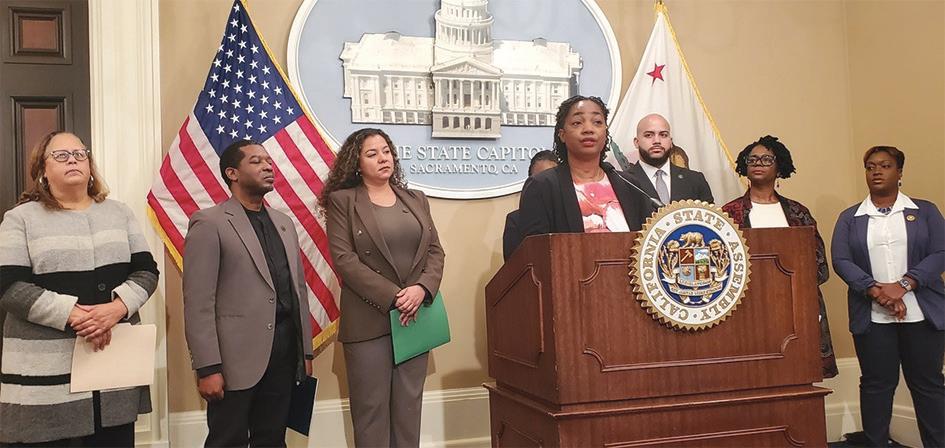
going through committees and amendments. So, we do want to wait to see if there will be any changes,” said Crumedy, who has participated in many pro-reparations activities across the state.”
“These are the same amendments that Newsom put last year for SB 1403 and Bradford rejected them,” Crumedy said. “This is just cut and paste. It’s just a stall tactic for another two years.”
According to the CLBC, SB 437 (Weber Pierson) would require the Director of Finance to allocate $6
“We will engage in conversations,
The Daycare Myth
By Katie Dukes sand Liz Bell, EdNC
The inaccuracy of the term “daycare” is at the heart of a book by Dan Wuori, an early childhood expert who you may know from his viral social media posts or his previous work as senior director of early learning at the Hunt Institute. In “The Daycare Myth,” Wuori argues that what we think of as “daycare” doesn’t exist. “That’s a strange thing to say because there are businesses all over North Carolina who have that right outside on their signs,” Wuori said. “But for almost 100 years now, we have envisioned daycare as just this safe, warm place that children can be left during the day while their parents go to work.” Wuori asserts that vision has never captured the vital teaching and learning that takes place inside what people have typically called “daycare” or “childcare” programs. “The problem with both of those terms in my mind is that they center care. The care in those settings is necessary, but not sufficient,” Wuori said. “This is you selecting who is going to co-construct your child’s brain. This is not babysitting while you go to the movies.” Wuori’s book captures a sentiment shared by many researchers, educators, and leaders in early childhood education, including North Carolina state Rep. David Willis, R-Union, co-chair of the early childhood caucus and owner and operator of a preschool program in his district. “There are several terms describing early childhood education that carry somewhat

‘babysitting.’ I challenge anyone who thinks this is easy to come spend a day in the classroom.”
Centering learning
As parents know, babies don’t come with instruction manuals. While parents are their children’s first and most important teachers, decades of evidence show that professional educators play a crucial role in the development of infants, toddlers, and preschoolers. Their expertise and experience make them an essential resource for parents. Most human brain development occurs in the first three years of life. During this time more than one million neural connections are formed each second. Strengthening these connections during the 2,000 days between birth and kindergarten leads to improved outcomes in education, health, employment, and economic stability. Because of that, research has found that high-quality early childhood programming yields a 13% %-%-per-year return on investment as children grow into adults.
In our travels to other states, as we’ve researched best practices, we’ve found a variety of ways that people refer to early childhood education at the state level:
New Mexico has a cabinet-level Early Childhood Education & Care Department.
negative or minimizing connotations, such as childcare, daycare, and nursery schools,” Willis wrote in an email.
“The teachers are providing so much more than just
Acrobatics & Artifacts: Umoja Brings Black History to Life
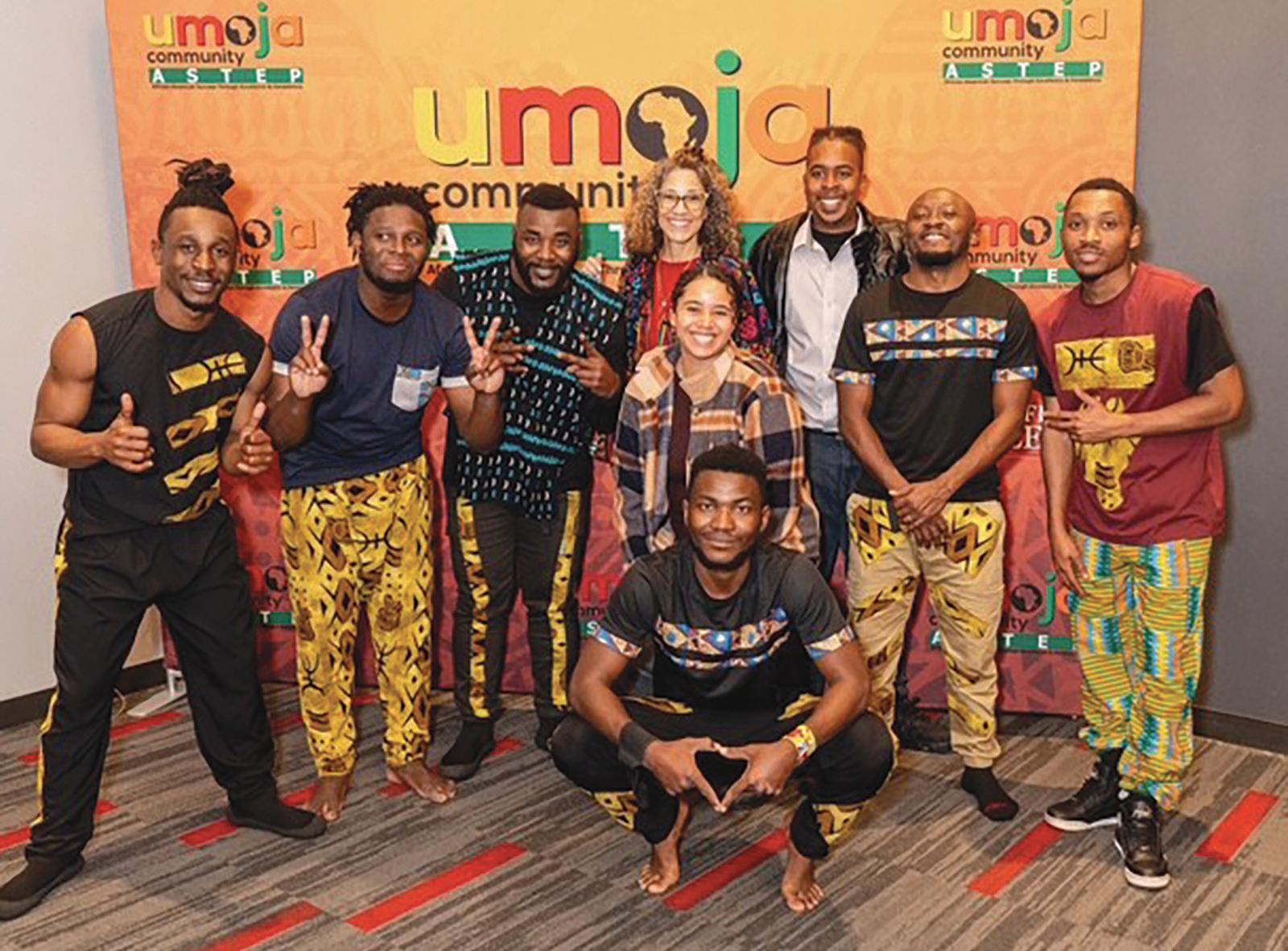
0191 or pparks@bakersfieldcollege.edu.
Oregon has its own state-level Department of Early Learning and Care.
Michigan’s Office of Child Development and Care is housed in its newly-created Department of Lifelong
Education, Advancement, and Potential. Massachusetts houses its Department of Early Education and Care within its Executive Office of Education (like our state’s Department of Public Instruction). Vermont similarly places Early Education within its Agency of Education. North Carolina’s state government also emphasizes the significance of education in its official nomenclature. The state entity that oversees much of our formal system is the Division of Child Development and Early Education (DCDEE) under the Department of Health and Human Services (DHHS). That name indicates the focus is on the brain development and education of our youngest learners. But all these phrases and titles are cumbersome, both in conversation and in writing. A simpler term has been adopted in Finland and by a specific model of early childhood education here in the United States — educare. In both instances, this model centers education while still acknowledging the care inherent in early childhood education settings. Though “Educare” has not found its way into the common vernacular of the United States, “daycare” simply isn’t an accurate term for describing the provision of care and education in the earliest years. As Terra Flint, childcare director and assistant pastor at Trinity Wesleyan Education Center in Eden, North Carolina, put it at a recent rally outside the legislature: “It’s not daycare, because I don’t care for days!”

Precious, a teacher at Kate’s Korner in Durham, North Carolina, oversees center time in a toddler classroom. Photo by: Liz Bell, EdNC
By Paula Lynn Parks Umoja at Bakersfield College finished off Black History Month with an educational and entertaining event filled with history and acrobatics.
Khalid el-Hakim presented an
Sen. Akilah Weber Pierson (D-San Diego), chair of the California Legislative Black Caucus, talks about the “Road to Repair 2025,” a package of priority bills the caucus introduced on Feb. 20 at the State Capitol. CBM photo by Antonio Ray Harvey
